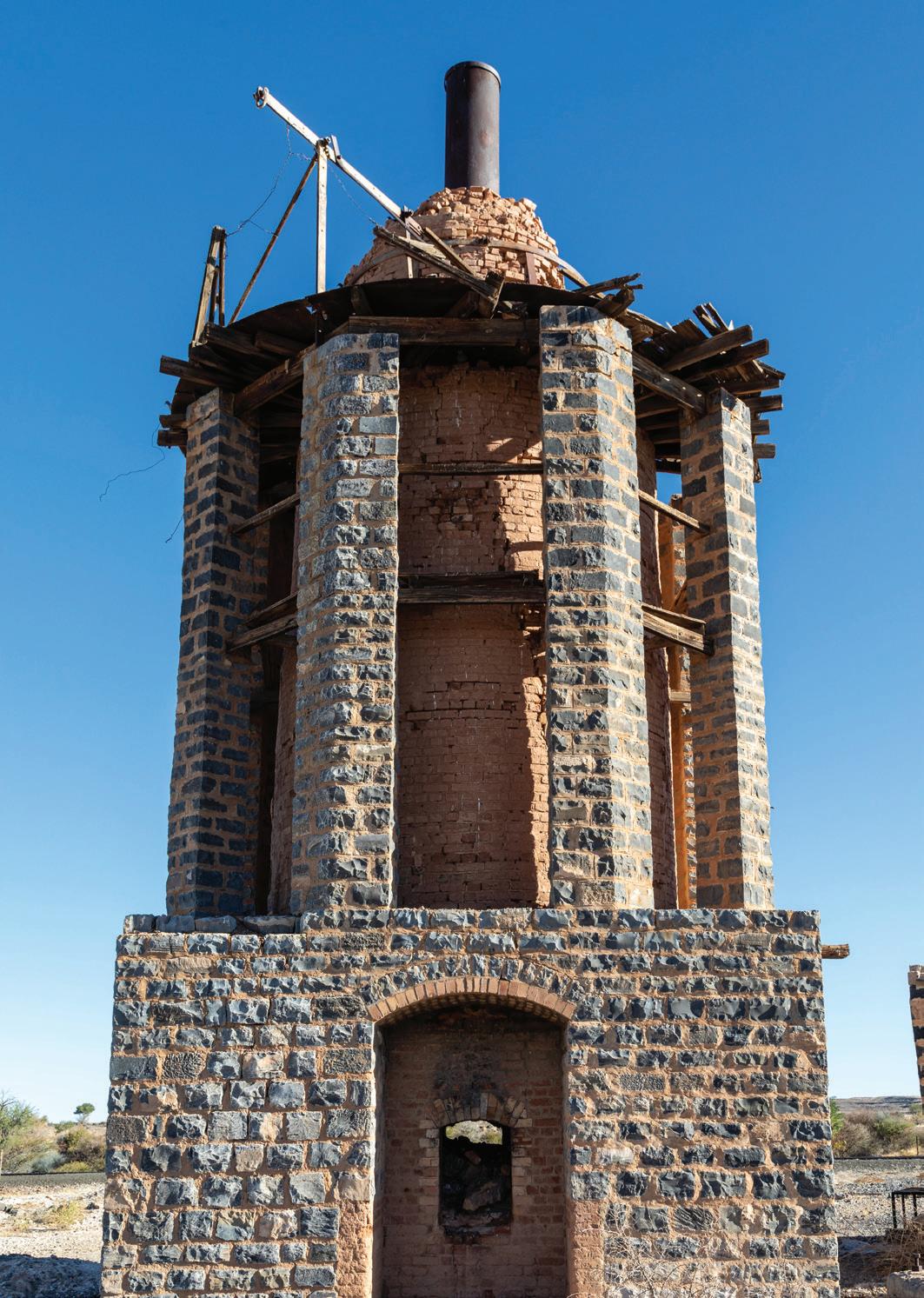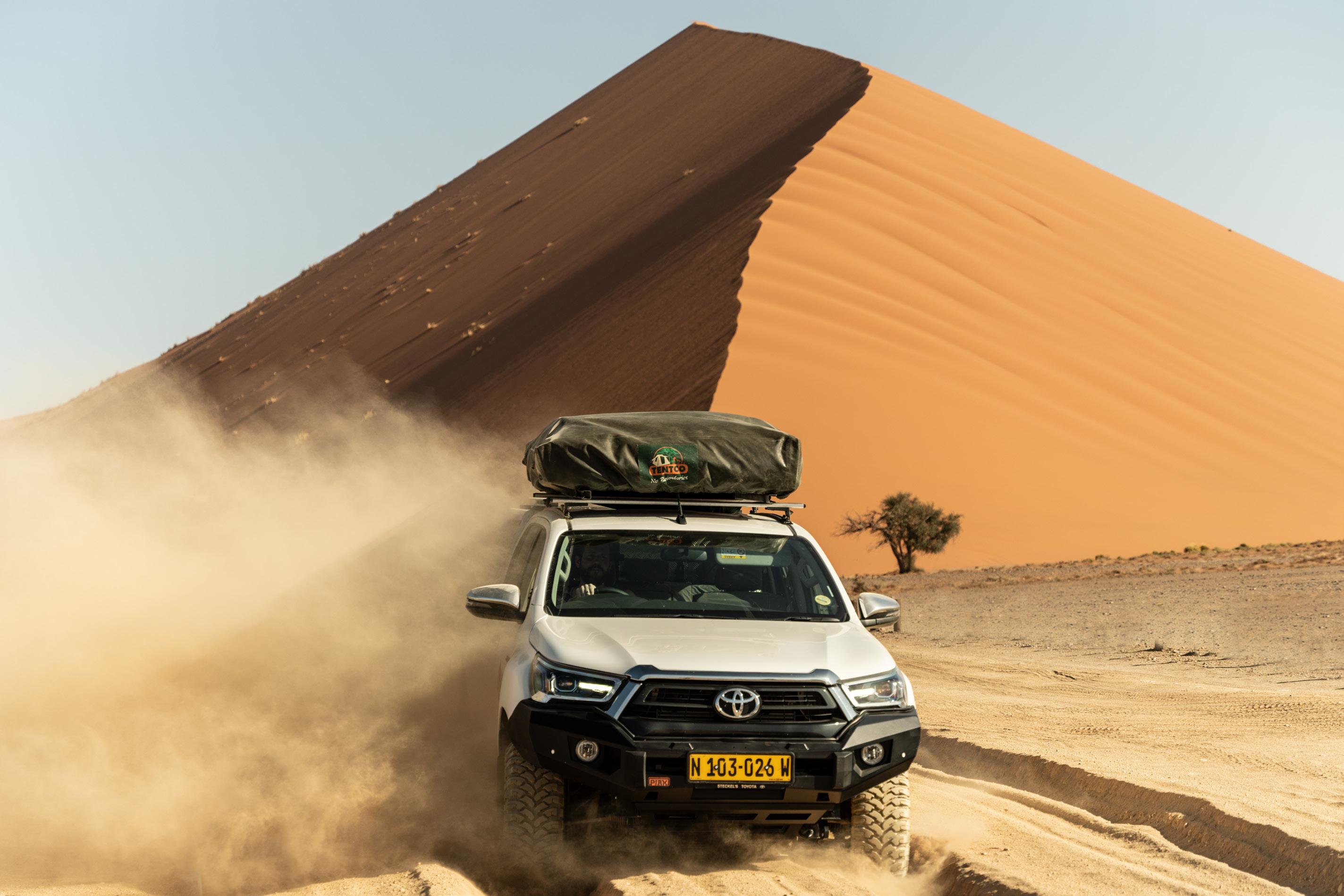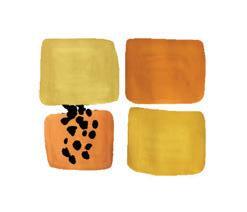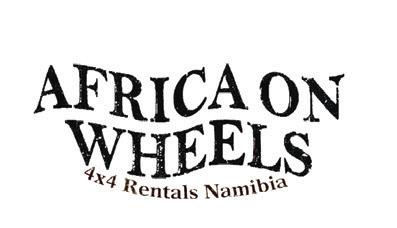
















Fyodor Dostoevsky






Not For Persons Under The Age of 18.





















Fyodor Dostoevsky






Not For Persons Under The Age of 18.



www.flynamibia.com.na
Select your flight
Select which tickets you would like to purchase: destinations, travel dates, morning/afternoon departure. We offer multiple fare options such as: Saver, Classic or Premium
Please enter names as they appear on passport or travel documentation
LOGIN to upload passenger details from previous booking.
Baggage policy, sporting equipment, over weight luggage or to add an additional bag(s)
How can you make a payment?
Cash payment at: Eros Airport, Ondangwa Airport, Oranjemund Airport
Online card transaction

Electronic Funds Transfer (EFT)
Read up on all our additional information regarding terms and conditions, and tick the selection box once completed to continue.

Fill in your payment details in our DPO paygate to make final payment.
Transaction confirmation will be sent to passenger email entered.
You can also purchase from:
Windhoek Eros Airport Office
Ondangwa airport office
Rundu airport office
Katima Mulilo airport office
Hosea Kutako airport office
PayToday app Buddy SuperApp
Online check-in opens 24 hours before departure of the flight on Fly Namibia
Check-in opens 1h 30min before domestic flight and 2 hours before international flight.
Check-in CLOSES 30 min prior to domestic flight and 50 min prior to international flight.
All major travel agents
Items NOT allowed in hand luggage:
Lotions and aerosols above 100ml, flammable aerosol, sharp objects, i.e. nail files, nail scissors, Leatherman, matches.
MAX 20kg Per person
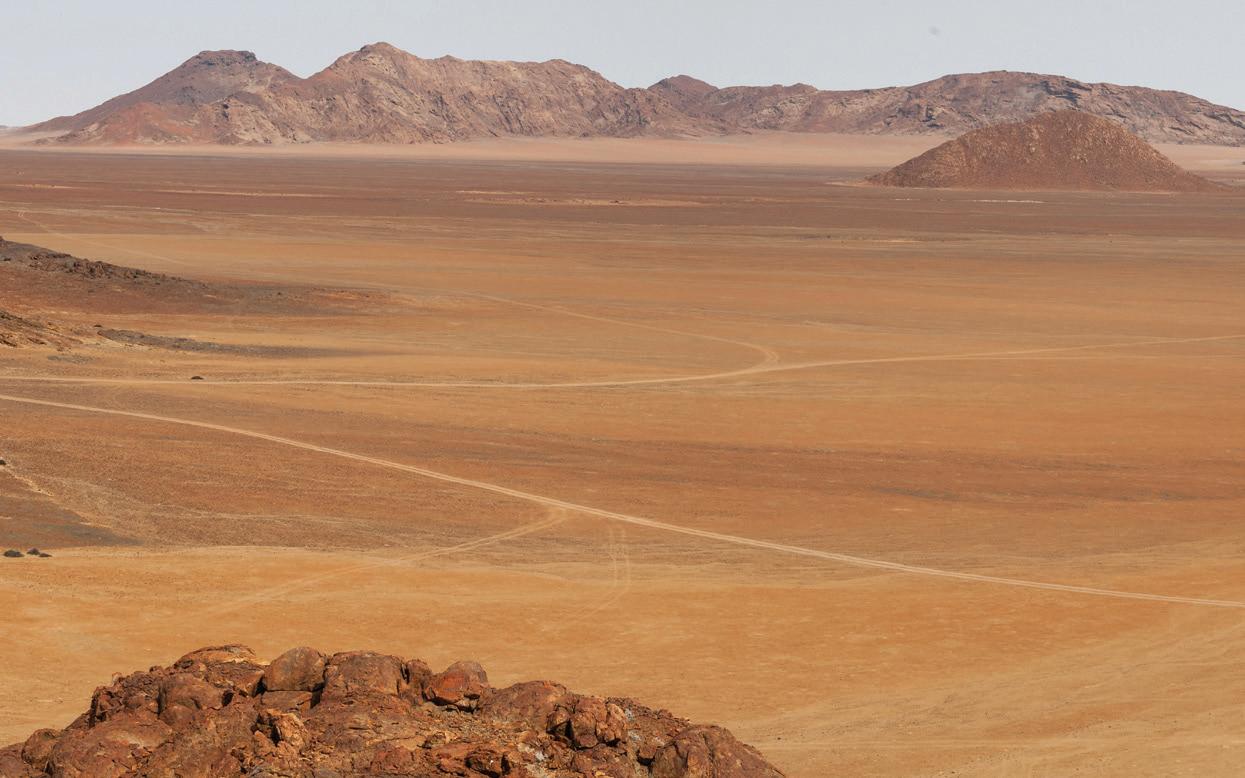
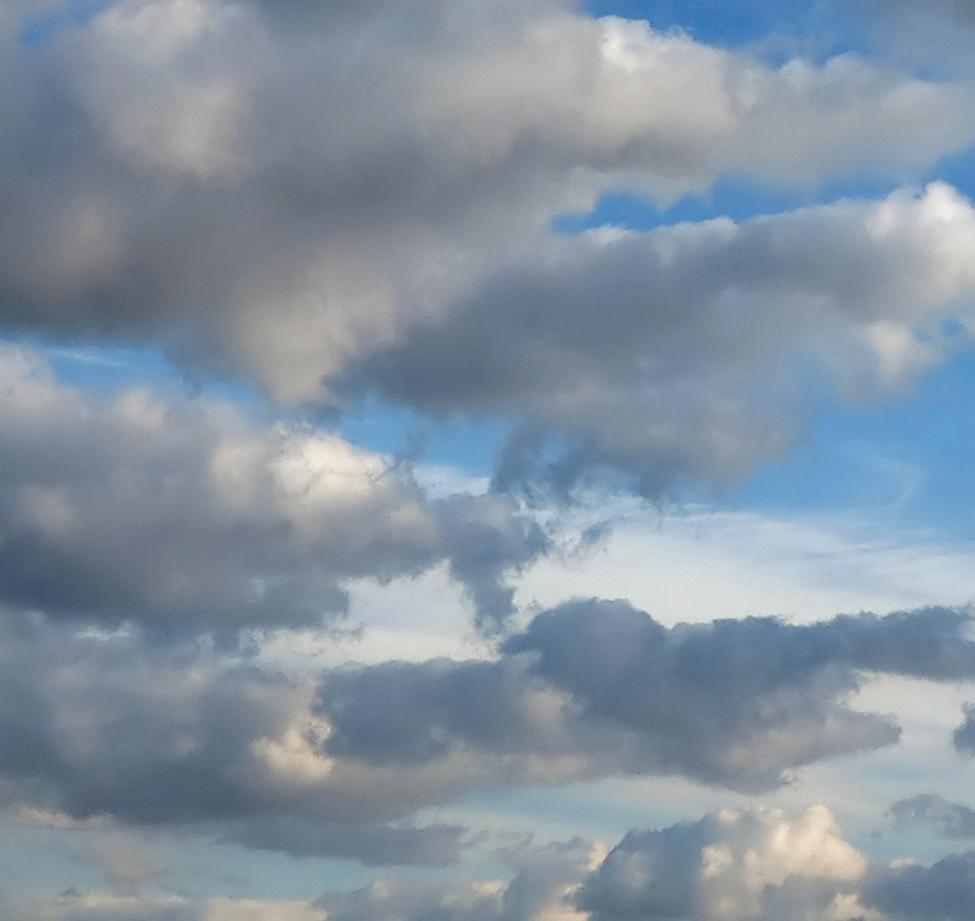
with FlyNamibia
Schedule as per date of going to print. Please check the FlyNamibia website to stay updated on flight destinations, routes and schedules.
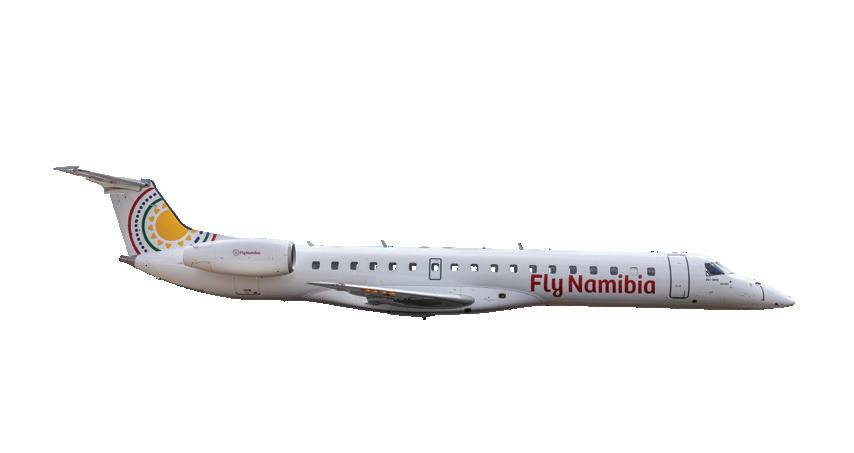
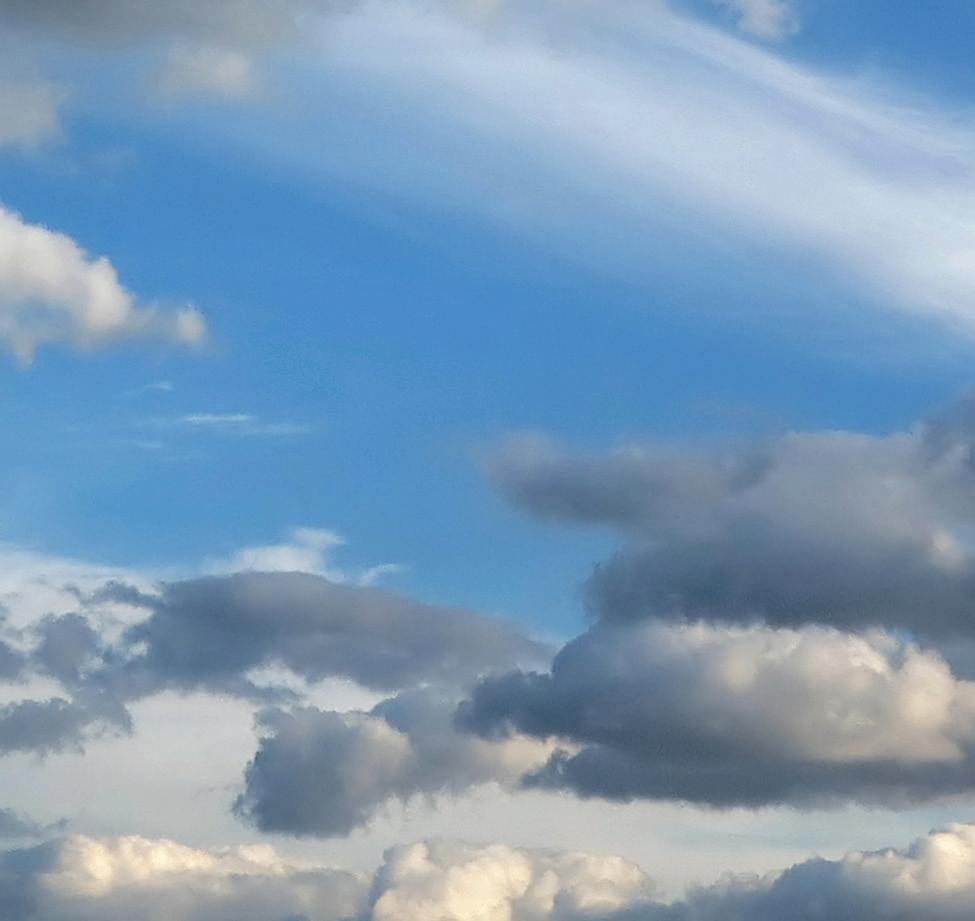
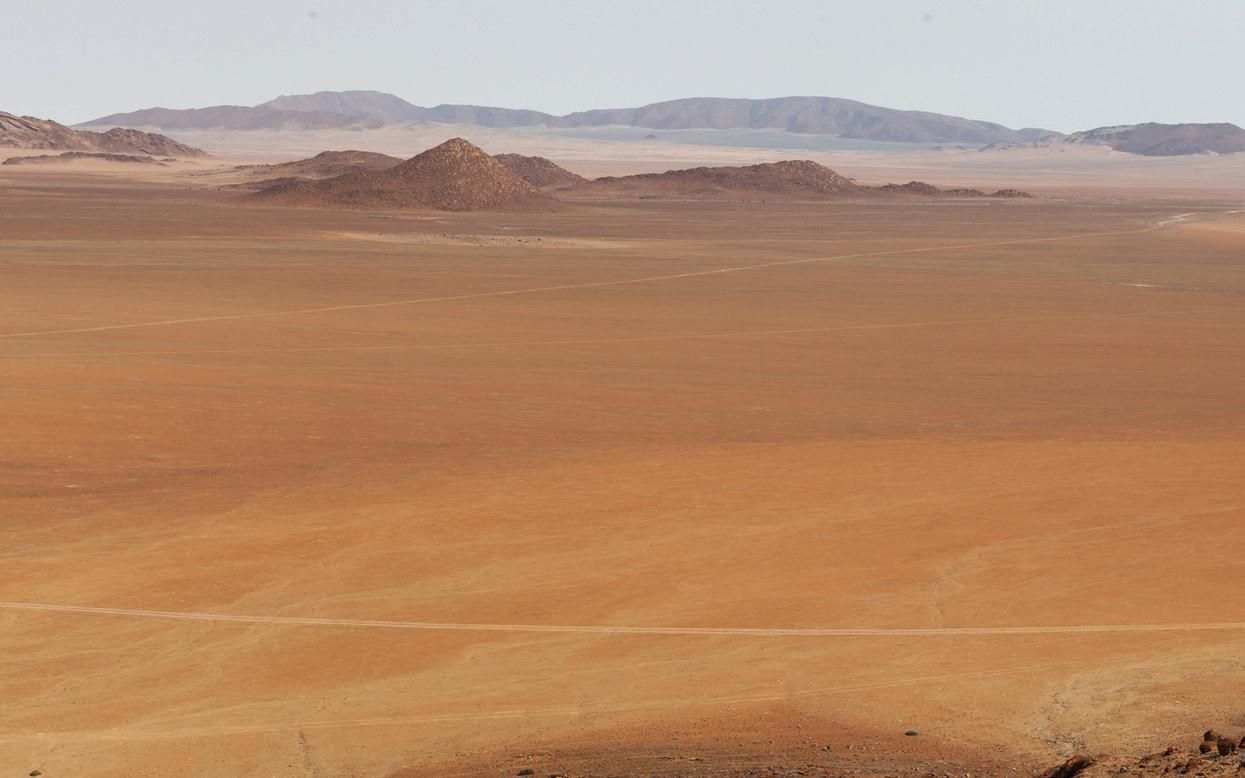


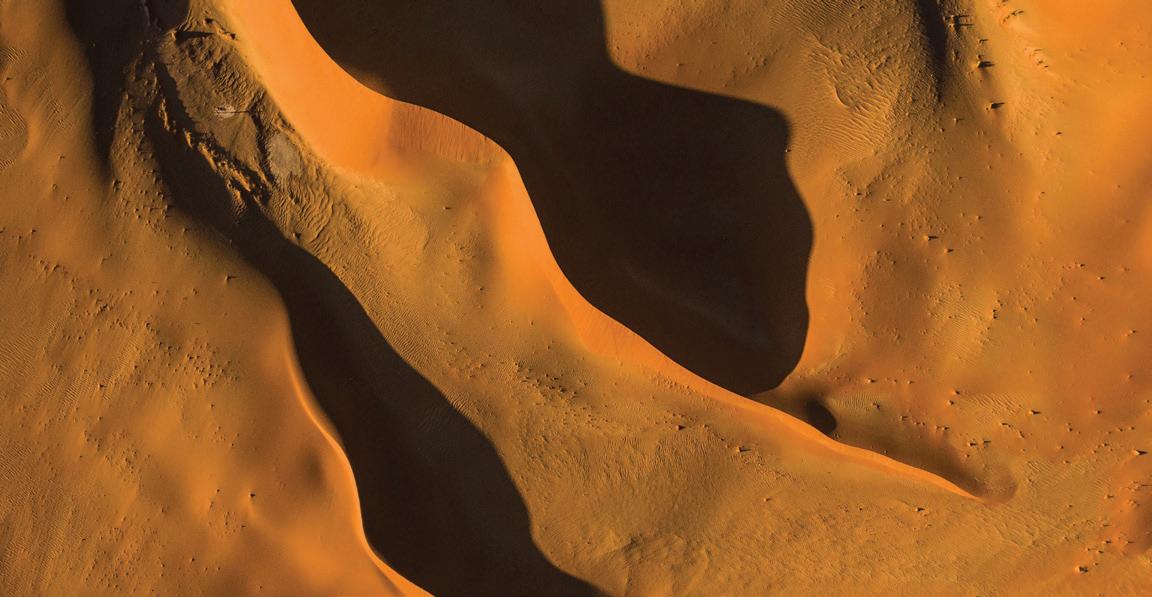

In June we celebrate four years of operations as Namibia’s first privately owned scheduled passenger airline and we could not be more thrilled! Having started with a flight to Oranjemund in June 2019 under our previous name, FlyWestair, our airline has grown from strength to strength, despite the turbulent times of Covid. We have stood strong in our values, beliefs and dreams of creating a more connected Namibia and being a part of the country’s economic growth and prosperity. Along with our partners Westair Aviation, we now employ nearly 400 people and fly to 10 destinations, with more dreams and expansion on the horizon. Here’s to a bright future for Namibia and those working to help build the nation!
This month we’re thrilled to connect you to more of Namibia, more frequently! Our Oranjemund route is now operating with five flights per week - an exciting increase from just three flights per week. Oranjemund is a vibrant coastal town in Namibia’s deep south, with plenty of opportunities for travel and commerce. We have been able to increase the frequency of this route with support from Debmarine Namibia, Shell Namibia and Westair Aviation, who also realise the value of Oranjemund in the grander scheme of things.
In May our FlyNamibia bursary pilots started their training. The four candidates are gaining hands-on experience in the aviation industry, through exploring the multiple sectors that contribute to running a scheduled airline. Through this bursary program, FlyNamibia aims to afford young, up and coming aviators tangible opportunities to pursue this aspirational career, while simultaneously injecting fresh perspectives and new faces into the industry. We are beyond excited to see what the future holds for the bursary candidates.

In our effort to support Namibian tourism promotion, FlyNamibia Safari travelled to the continent’s leading expos throughout April and May. With over 6,000 attendees, World Travel Market Africa offers a business-to-business (B2B) exhibition, networking opportunities, and year-round access to industry connections, news, and developments. In May, we ventured to Africa’s Travel Indaba in Durban, a 3-day trade show which seeks to create a platform for thought-leadership, knowledge sharing and obtaining the latest in global trends and local insights.
In partnership with Namibian musician EES, and through networking at these events, FlyNamibia Safari aims to promote our awe-inspiring country to global audiences. Keep a lookout on our social media pages as we share more wanderlust inducing content with a uniquely EES flair.

The Face of FlyNamibia ambassador search raked in over 100 entries from the far corners of Namibia. We had a tough task in selecting only 10 finalists, and now it’s time for the public to vote for their favourite. Watch our Top 10 entry videos and vote for the personality you think best represents our proudly Namibian airline, by visiting the FlyNamibia Story website or following along on our social media pages. Public voting closes on 11 June.
FlyNamibia currently operates domestic routes from Eros Airport in Windhoek to Ondangwa, Rundu, Katima Mulilo, Walvis Bay and Oranjemund, as well as a regional route between Hosea Kutako International Airport and Cape Town International Airport. Flights can be booked through all major travel agencies, or directly via FlyNamibia’s 24/7 contact centre at +264 83 339 0011. Customers can also visit www.flynamibia.com.na for online bookings.
Happy flying!
The FlyNamibia Team


Discover the artistry of Osande Baskets, where handmade wonders weave together aesthetics and functionality. Made with love and attention to detail, these baskets are meticulously handcrafted using stretch jersey fabric, available in a delightful array of colourways including mustard yellows, royal blues, greys and pinks. Embrace the charm of the beloved Moses basket, a manger and carrier for small babies, complete with a cosy hood. From laundry baskets that elevate your tidying routine to tray-style baskets that add a touch of elegance to any room, Osande Baskets offers a range of exquisite storage solutions. Surprise an expecting mother or adorn your own abode with these enchanting creations.

@osande_handmade_baskets
Unique local lifestyle brands and products that will guide, motivate and inspire you to express your identity.
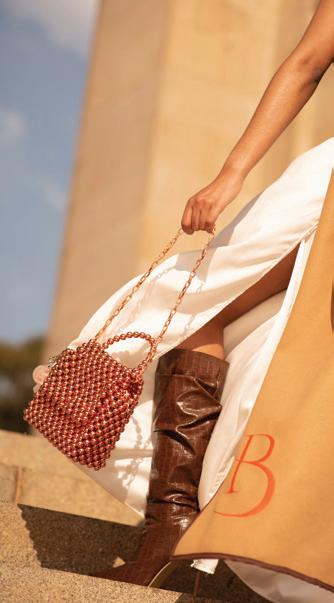
BLIZZARD AND BREEZE
This South African-based clothing and accessories label showcases timeless elegance and comfort, thanks to their expert use of breathable and soft fabrics, crafted into feminine dresses, skirts and trousers. But what truly steals the spotlight are their jaw-dropping hats, meticulously crafted with chain and fabric details to make a statement. With a brand message that embraces the powerful and beautiful multifaceted nature of femininity, these pieces of clothing and accessories symbolise both the bold and the soft, the courageous and nurturing, the Blizzard and the Breeze.
 Photography by: Mkfoto @blizzardandbreeze_ www.blizzardandbreeze.co.za
Photography by: Mkfoto @blizzardandbreeze_ www.blizzardandbreeze.co.za



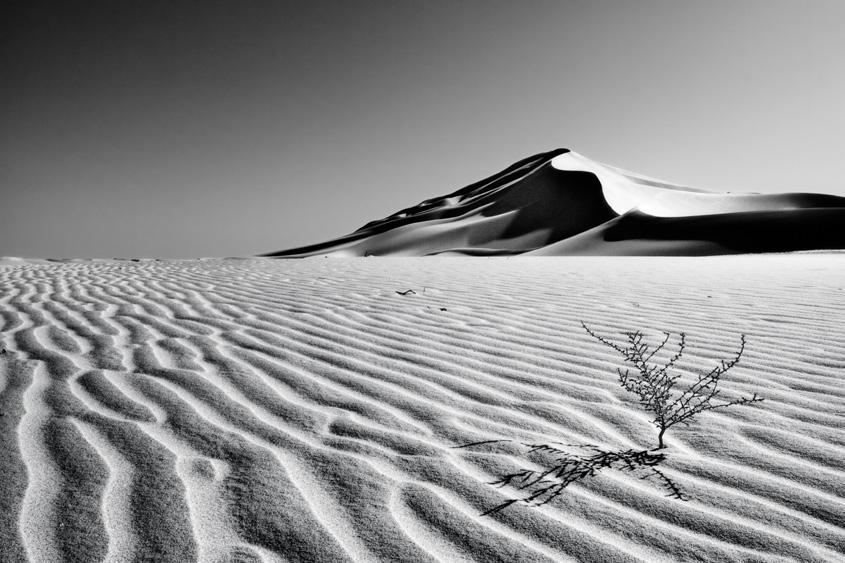


LUUKS. is your style destination for affordable and fabulous finds. This Swakopmund-based online shop is a treasure trove of delight, offering a curated selection of jewellery, clothing, accessories, cosmetics, body products and gifting essentials. With their user-friendly online shop, browsing through their wide selection of stock is a breeze. LUUKS. was born from the creative fusion of two friends, who combined their individual style personalities to bring something truly special to the Namibian market. LUUKS. Is also your onestop destination for personalised corporate gifting, curating and branding items that clients will love and use for a long time.
@luuks.official www.luuks.com.na
Are you a Nam or SA-based small business lifestyle brand? List your label with us for only N$400 per month. fly@venture.com.na


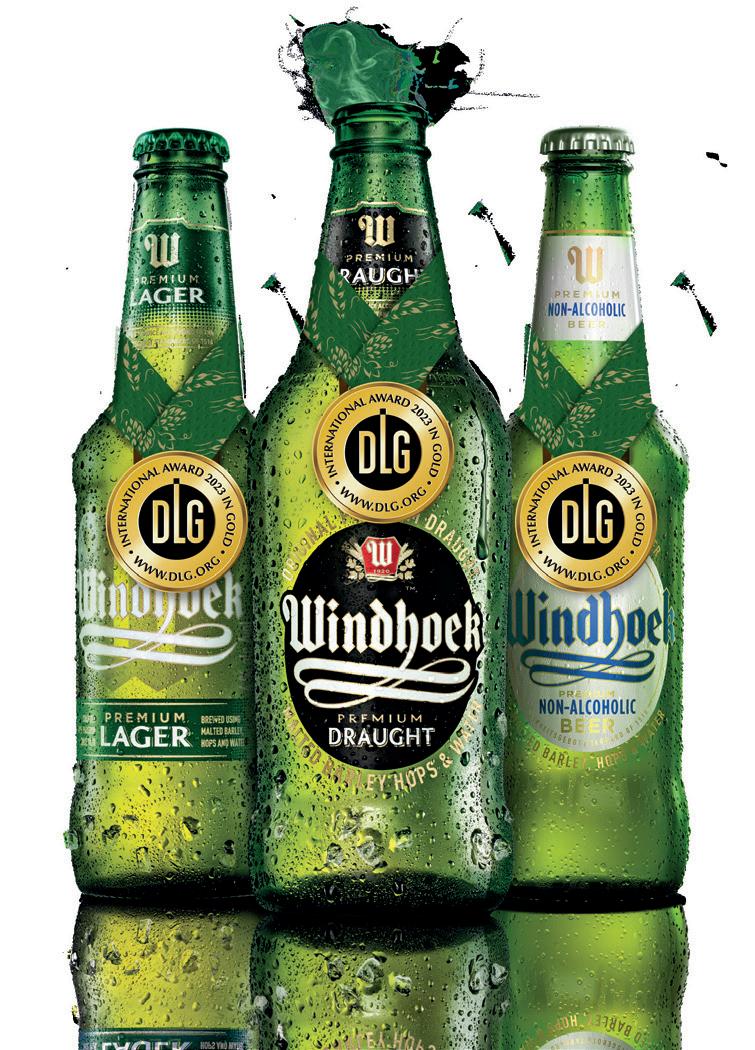

Heat oil in a large saucepan and stir-fry the onions, garlic and ginger until soft. Mix the remaining ingredients except the baby tomatoes, coriander and spaghetti.
Add to the onions together with the chopped tomatoes. Simmer until sauce is fragrant and thick. Add the baby tomatoes and coriander. Bring to the boil, then remove from heat. Add the cooked spaghetti to the sauce. Roll a sturdy piece of cardboard or plastic into a funnel
Spoon the hot mixture into sterilized, piping hot jars
Keep on a shelf but refrigerate after opening.
Use slow roasted cherry tomatoes (page 16) instead of

Discover more of Antoinette's delicious


If Namibia had a list of most fashionable men in recent years, these three men would no doubt make the list each and every single time. Always dressed for any occasion, groomed to perfection and carrying an aura only well-styled men are known for, Aubrey Tjerivanga, Simeone Johannes and Vernon van Wyk are three of Namibia’s current kings of style. I caught up with these trendsetters to talk fashion, styling and their love for design.
Known not only for his unique style and styling work on numerous Namibian creative projects, Vernon has always loved experimenting with fashion and has always found pleasure in making clothes look good. “When I was younger, my mother made sure to buy clothes with coordinating colours and that’s where my colour coordinating started,” he recalls fondly.
He describes his personal style as “a mixture of retro and modern street style”, taking inspiration from popular 90s sitcoms like The Fresh Prince of Bel-Air and, closer to home, the iconic South African pantsula style.


Vernon’s knack for styling has earned him respect amongst Namibia’s biggest stars and he boasts styling Gazza and DJ Shoza for their 2022 Burna Boy concert performance in Windhoek. “(Designer) Linricho Humphries and I created the outfits from scratch within three days from the concert. I was a bit anxious but it came out exactly how I wanted it to,” he says. More recently, he has also done styling work on the Ompata online series.
On his current style obsession: Louis Vuitton’s varsity jackets and trucker jackets. “Virgil Abloh definitely made
sure with those. I think at the moment I really just have a thing for jackets. I can’t wait for winter,” he exclaims.
His dream wardrobe: “I would make sure there’s a pair of Dr. Martens loafers and an unlimited supply of Nike Air Force 1s and Converse Chuck Taylors. Louis Vuitton or Carhartt trucker jackets. Maybe Chrome Hearts denim jeans as well. My wardrobe would definitely be filled with lots of shoes, jackets, custom pants and plain T-shirts.”
A fashion designer and style star in his own right, Simeone Johannes is no stranger to the fashion world. Just like his fashion creations, his immaculate wardrobe turns heads wherever he goes.
“I’ve always had an obsession with fashion. My maternal grandfather used to make clothes, so growing up, my siblings and I were surrounded by sewing machines. In primary school, I got into sketching, but in high school, I dropped that hobby to focus on my studies. I picked up the hobby again in varsity where I studied towards fashion and media studies,” says Simeone.
He uses one word to describe his personal style: versatile. Simeone does not shy away from playing with shapes, colours and silhouettes and loves mixing masculine and feminine styles.
Over the years, Simeone has honed in on his own style, and he is known for androgynous looks that are a mix between preppy and modern. He also spends copious amounts of time on the internet where he consumes lots of fashion content that influences how he puts his clothes together.

On his current style obsession: “I have a huge obsession with oversized clothing, I’m a very petite guy, so oversized clothing makes me look a little more buff than I am. I’m also currently obsessed with bags! I can’t wait to own my first designer bag!”
His dream wardrobe: “My dream wardrobe is one that oozes opulence and quiet luxury – simple yet effective. I would love to own the Gucci Dionysus Super Mini bag, a Hermès Mini Kelly, a Van Cleef Alhambra bracelet together with a Cartier LOVE bracelet and Prada sunglasses.”
Aubrey Tjerivanga or “Aubrey Styling”, as he is popularly known on social media, is one of the go-to stylists in the land of the brand. A creative who is constantly evolving, Aubrey recently added “fashion reseller” to his portfolio after launching his very own pre-loved clothing online store.
“From a very young age I knew that I didn’t belong in the normal working world of 8-5. My grandmother and mother were both seamstresses and I grew up knowing fabrics and different designs from a young age. I knew I definitely didn’t want to be a fashion designer until I discovered styling in my early 20s,” says Aubrey.
He describes his style as “experimental”, as he is always willing to try out something new and unique. Aubrey is passionate about styling, and seeing how clothes transform people and how the right wardrobe adds to a narrative in films and ads brings him immense joy.
On his current style obsession: “DENIM! I’m loving how versatile it is and how I can mix, match and play around with it.”

His dream wardrobe: “Everything would be thrifted: a Patek Philippe 5711 Black Venom watch, a gorgeous collection of dark sunglasses, a crossbody sling bag made by a leather artisan, a wide selection of Air Force 1s and a diamond-encrusted Alexander McQueen suit.”
Follow these style kings on Instagram:
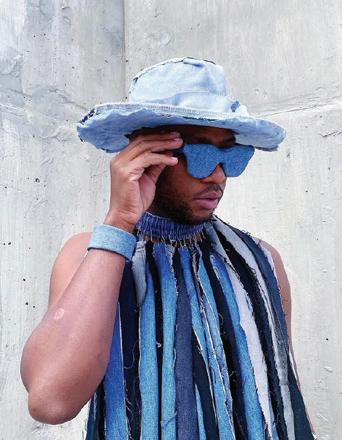
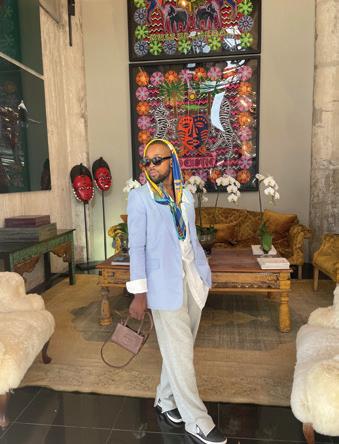
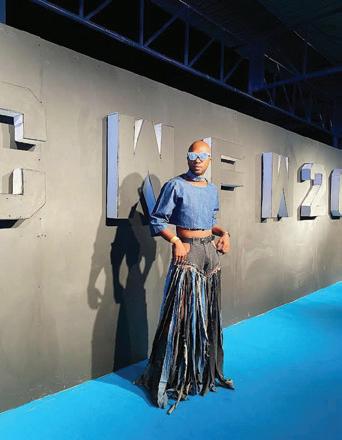


Vernon - @vernxn_vw
Aubrey - @aubreystyling_
Simeone - @synedgy
Rukee Kaakunga is a Windhoek-based communications specialist, blogger and freelance fashion writer. Contact her via email: rukeekaakunga@gmail.com and follow her on Twitter @rukeeveni and Instagram @rukeekaakunga.
Aubrey

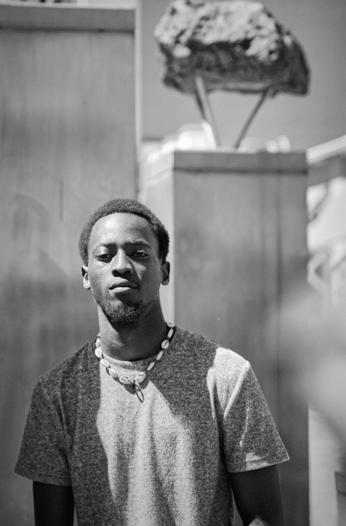


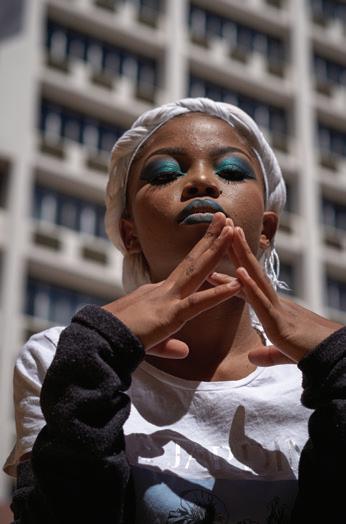


“Iam an open shutter camera ... One day all this will have to be developed, carefully printed and fixed.” Christopher Isherwood, Goodbye to Berlin.
This same conscious gaze and attentive perception form the theme of a new collaborative exhibition entitled See ME, initiated by the German ambassador to Namibia, Herbert Beck, and featuring Namibian youth from Katutura. The works included in this exhibition are those of talented artists Tireemukuru Toromba, Elmau Boois and Malakia Matias.

A series of portraits explores our selfie-obsessed photography and the need to be liked and validated for an image that is mainly displayed on social media. This group of passionate photographers draws attention to another word: recognition. However superficial and ephemeral we may be, we gain legitimacy and are finally considered “real” when our image is seen and given the coveted “thumbs up”. In the exhibition, young people are both subjects and participants in their own narratives. The portraits are part social commentary, part imaginative play. Most of the photos were taken by young people still honing their skills as aspiring artists.
During his tenure as ambassador to Namibia, Beck has been actively involved with the Basketball Artists School in Katutura, a flagship project in both sporting and social terms. The photographers and models featured in this exhibition all live in the Katutura community. This joint project has given them the opportunity to develop practical skills and self-expression.
“The project has been a continuous and mutual learning process. It is encouraging to see how these young people follow their own passions and ambitions and find ways to describe and share their present reality with others,” says Beck. A high percentage of young people in Namibia are unemployed. Beck hopes that by creating alternative artistic opportunities this problem can be at least partially addressed in the coming years.
Before being posted to Namibia at the end of 2019, Beck worked in South Africa and Iceland. The lens of his “Made in Germany” Leica camera focused on urban landscapes and
captured the movement of changing weather elements over a fjord from his stay in Iceland. “But my real fascination – like that of our photography collective – has always been with people,” Beck confesses. Photography requires an “interested eye” and an invitation to perceive. Adds Beck, “It should be more than just a fleeting flare of interest. I want to stand still long enough to capture something deeper.”
Like a landscape that is constantly changing and revealing itself to the attentive observer, portrait photography requires a similar sense of wonder and even greater daring. As an afterthought, Beck mentions the work of prolific contemporary German painter Gerhard Richter, known for his photorealistic masterpieces. In one of his well-known works, Betty (based on a photograph of Richter’s daughter), the subject sits facing away from the viewer. “This provokes certain questions in us. What is she thinking? When does she turn her attention to the viewer? Like the portraits of the teenagers, it also alludes to a more classical style; some of the photos shown suggest Vermeer-like lighting and quiet contemplation.
“The greatest joy of this project was watching the young people become aware of their worth as personalities and as promising artists. I believe that everyone deserves opportunities to live a decent, fulfilling life and to be seen for who they really are.”
Beck concludes with an invitation to travellers visiting Namibia for the first time: “Stop, take note of the artistically talented people in this country and don’t be afraid to invest in locally produced art. As a memento of current Namibia, why not pick up or bring back a small painting or photograph instead of the usual souvenir. Art here is really affordable!”
See ME is on view at The Project Room from 2 to 21 June 2023.
Text: contributed by The Project Room

It should be more than just a fleeting flare of interest. I want to stand still long enough to capture something deeper.


If it had been solely up to Michelle Obama, Barack Obama might never have run for President of the United States. Becoming by Michelle Obama is one of the most ”no holds barred” memoirs. Released in 2018, the book was well received worldwide. Michelle Obama is popular as a former First Lady of the United States of America, and she is also a prominent representative of black women. The world was ready to celebrate her and read her life story – all 400 pages of it.

Becoming is a consistent and detailed memoir of everything you would want to know about what makes Michelle Obama the person she is. It is a complete life story from her parent’s two-bedroom apartment on Euclid Avenue in South Central Chicago to the White House.

The memoir unlocks the former First Lady’s childhood and then paints a picture of a young woman who has always strived for excellence and placed the onus on herself to take personal responsibility in her school career. Her brilliance as a student was discovered as early as kindergarten.
This book also underlines the importance of a stable home. Both her parents, Fraser and Marian Robinson, were committed not only to their children's education but also their overall well-being despite the family’s limited resources. They come across as incredibly supportive parents. What I admire most is that they went into parenthood determined to give their two children the very best they could offer. Michelle's older brother Craig was the first to go to Princeton University and Michelle followed suit a few years later, despite being told by a school counselor that she was not Princeton material.
Michelle Obama studied at Princeton and Harvard Law School in the 80s and in her book the chapters on that time in her life mostly deal with being a minority, facing discrimination and trying to excel in an environment that was not very diverse. Michelle's passion for inclusive education really sparked when she worked at the Third World Centre in Princeton. After graduating in law Michelle started to work at a law firm in Chicago. This is where she met Barack Obama – he was an intern, she was his mentor. While at the law firm Michelle pondered her life purpose and discovered that being a lawyer might not be her calling.
Michelle and Barack's love story is one for the ages. Despite both of them being ambitious individuals with a passion for serving and excelling, we learn in Becoming that they are very different in other ways. While Michelle is orderly and enjoys strategising, Barack is not the neatest. Even worse, he smoked back then – a habit Michelle loathed. But what you can learn from their relationship is what can be achieved when partners support each other's individual dreams.
Michelle's time in the White House as the first African American First Lady was very purposeful. In the book she details her ideas and goals for tenure as First lady and

flawlessly executed each and every one of them. One of her resolutions, which I highly respect, was not to tackle policy issues as the First Lady. She decided on this caution in view of Hilary Clinton’s role in the White House. Michelle really set out to support the President’s policy with her own East Wing initiatives such as the Let’s Move programme and the White House vegetable garden. The latter was inspired by the President’s determination to reform the American people's health care attitudes.
Until I read Becoming I didn’t realise how many misconceptions I had about Michelle Obama, perpetuated in the media over the years. Michelle tackles the subject of being “an angry black woman” head on. However, the biggest misconception was the notion that by virtue of being married to a politician, Michelle must love politics. For me it is admirable that she supported his dreams while ensuring that she also maintained her own wellbeing, achieved her own dreams, kept her individual identity outside of being known as Barack Obama’s wife.
Let me be honest, the memoir is not a page-turner. But many have come to the conclusion that this brick of a book is far from boring. I recommend you take a weekend and read the book all in one go, it flows better that way. There is a lesson to be learnt on almost every page and it leads the reader to asking poignant questions of themselves and wondering about their own life purpose.
Ultimately, Michelle Obama is someone who epitomises black excellence. The biggest take away for me as a black woman is that we don’t need to beg for inclusion and that we have a right to a seat at the table. Finally, in the words of former Miss Universe Zozi Tunzi, this book will inspire you to, “take up space and cement your place in society.”
Laimi Elago





Omar van Reenen, our very own loud and proud LGBTQ+ activist, is not only waving the rainbow flag high, but also making waves in Namibia’s fight for equality and inclusion. Born and raised in the vibrant Narraville location of Walvis Bay, Omar draws inspiration from their upbringing in a community steeped in resilience and progress. Raised by strong, independent women – including a single mother, sister, grandmother and aunts – Omar credits their empathy and compassion to these females. “I am very grateful for the feminists that raised me.”
The seeds of activism were sown early in Omar’s family history. Their grandparents, pioneers in Narraville, established the first progressive coloured hotel in the country. This historic hotel played a crucial role in Namibia’s fight for independence, serving as a meeting place for activists and organisations challenging the oppressive apartheid regime. Reflecting on their roots, Omar emphasises the importance of community support and creating safe spaces, echoing their grandparents’ legacy.
During high school, Omar embraced leadership positions such as student council member and junior mayor, finding solace and a sense of belonging in these roles. These experiences provided a protective shield as they navigated questions about their sexual identity. Omar was a science fair fanatic and ended up representing Namibia in the United States with a project, securing a scholarship to study biochemistry at the State University of New York.
The political climate during their time in the US, marked by racial, cultural and homophobic agendas, propelled Omar to join the student government. They made history by becoming the first international student to serve as student government president. Omar championed equality by advocating for equal financial assistance for female sports teams and challenging existing gender disparities. It was during this period that Omar realised their calling extended
beyond the confines of science and decided to shift their major to political science.
In the face of increasing discrimination, Omar’s activism gained further momentum. Through their campus campaigns and impactful messages of diversity and inclusion on social media, they caught the attention of a queer couple seeking assistance in securing legal residence for their adopted children in Namibia. This prompted the founding of Equal Namibia, a youth-led organisation dedicated to pressing the justice system to consider queer rights – a watershed moment in Namibian history.
Equal Namibia has taken the lead in Pride Month celebrations and spearheaded tangible change through advocacy, legislative initiatives and destigmatisation efforts. Omar’s unwavering commitment has helped shed light on the challenges faced by the LGBTQ+ community in Namibia and has facilitated conversations that were previously unheard.
Beyond their activism, Omar remains a multifaceted individual. Their role as an advocate permeates every aspect of their life, from the movies they watch to the books they read. However, when the poster board is put down and the rainbow flag is rolled up, Omar finds escape in dancing, regularly attending Drag Night Namibia as a means of decompression.
Omar van Reenen’s credentials, including their impressive qualifications and fellowships, only bolster their authority as a leading figure in the Namibian queer movement. Their tireless efforts continue to shape a more inclusive and accepting Namibia, where diversity is celebrated and equal rights are safeguarded. Omar’s story serves as an inspiration, reminding us that change starts with individuals who dare to challenge the status quo and advocate for a better, more inclusive society.
As Omar puts it: “Fighting for what’s right is always worth it.”
Charene Labuschagne
Fighting for what’s right is always worth it.





Welcome to Midgard, the ultimate family destination nestled in the heart of nature. We are situated a mere 85 km (±90 minutes) northeast of Windhoek and about 70 km from the Hosea Kutako International Airport. At Midgard you can immerse yourself in a world of adventure, laughter and create unforgettable memories as a family and with friends.
With an array of exciting activities, Midgard is the perfect place to bring your children for a day, weekend or week of pure joy and relaxation.
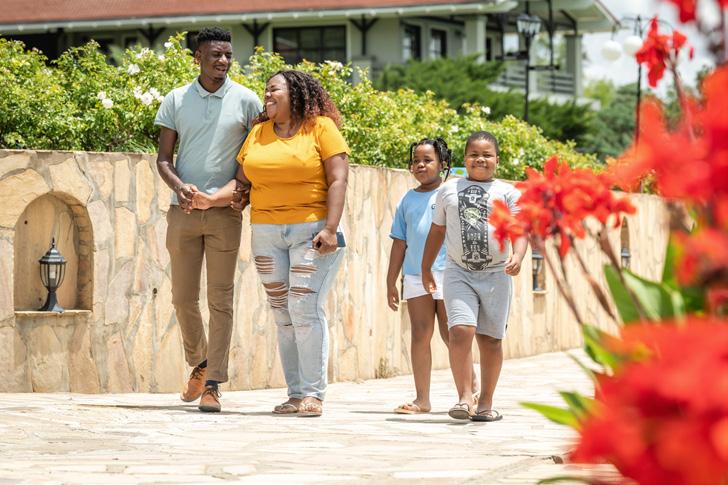
Explore our sprawling playpark, where little ones can unleash their boundless energy and creativity. From swings to slides, climbing frames to sandboxes, there's no limit to the fun they can have. Watch as their faces light up with delight while they embark on thrilling adventures and make new friends.

Experience the magic of our magnificent horses as you take a leisurely ride. Our friendly and gentle horses are perfect for both beginners and experienced riders, ensuring a safe and memorable journey for all. Traverse lush landscapes, breathe in the fresh air and create lasting connections with these beautiful animals.
Hop aboard our special train and embark on a delightful journey around our lodge property and revel in the excitement as you chug along on this enchanting adventure.
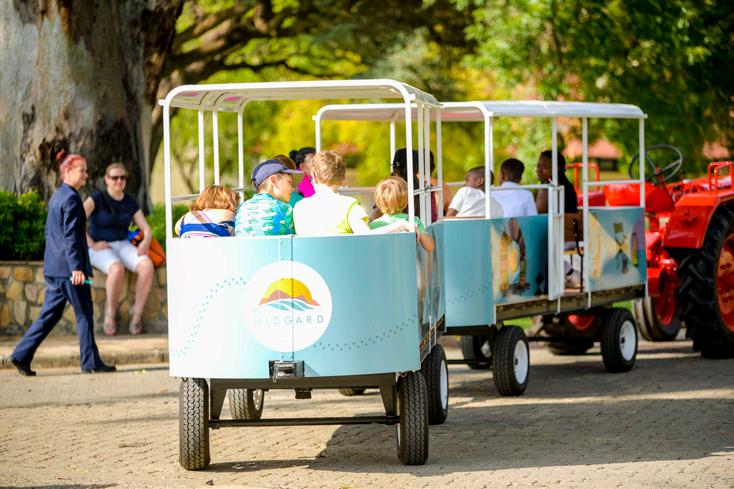
The train ride is sure to captivate the imaginations of young and old alike, leaving everyone with memories to cherish.
After a fun-filled day unwind and recharge in our expansive grass area, where families can simply gather, play games, or just bask in the beauty of nature. Watch your children frolic in the open space, soaking up the sun and relishing in the freedom of the outdoors. Midgard offers a haven where families can reconnect and create unique moments together.
Happiness will be complete as you indulge in wholesome and delicious food at our onsite restaurant. Our menu is crafted with care, offering a range of nutritious options that cater to all taste buds. From fresh salads to mouth-watering treats, our culinary delights will satisfy even the pickiest of eaters, ensuring a well-rounded and nourishing experience for the whole family.
Midgard is the place where dreams come alive and memories are made.
So, gather your loved ones and embark on an unforgettable adventure.
Book your visit to Midgard today and create cherished memories that your children will treasure for years to come.
How comfortable do you feel about discussing your mental health? Does this comfort level drop when talking about mental health in a workplace context? Recent studies show that about half of the global workforce fear repercussions for being open about their mental health at work.
Why this is frightening is that in a post-pandemic world where people are dealing with the loss of loved ones in families, or the loss of livelihoods in communities, mental health has been widely affected. We are seeing that many people have developed anxiety and more serious mental health problems have become amplified, in addition to many people falling below the poverty line.
Today, according to the World Health Organisation, 300 million people globally have depression and anxiety disorders. To quantify this in monetary terms: it is estimated that mental illness in the workplace costs businesses across the globe more than US$150 billion annually, according to JAMA Psychiatry.
One would think with numbers like that, companies would really prioritise their employees’ mental wellbeing. However, many employees feel companies simply pay lip service to wellbeing in the workplace. Another recent global survey confirmed that while 85% of companies feel that they really care about the needs of their employees, even more employees hardly agree.

The further you drill down into the data, the more you see that companies feel that their staff expect too much mental health support. This same survey also found that 71% of companies see mental health benefits as too costly and that they were not offered in the past, therefore they should not be necessary now.
It has repeatedly become clear that companies that really prioritise mental health not only attract top talent to their organisation, but it also acts as a workplace retention booster. The difference in turnover rates between thriving employees and those who are struggling is considerable. Added to this is the old adage that if you look after your staff, your staff look after your bottom line.
Perhaps even more compelling in this overstressed world is the fact that employees who feel strongly that their employer cares about their overall wellbeing are 71% less likely to report experiencing a burnout.
If you are one of the many people who feel that their mental wellbeing is unsupported in their workplace, you are not alone. Experts say that the first step to combat the global aversion to supporting mental wellness is to speak about it. The lack of conversations around mental health keeps any stigma surrounding this topic alive.
Author Brené Brown’s most shared quote is this: “Shame cannot survive being spoken. It cannot tolerate having words wrapped around it. What it craves is secrecy, silence and judgement. If you stay quiet, you stay in a lot of self-judgement.”
Says Brown, “The less you talk about it, the more you have got it.” She explains that by talking about your shame with a friend who expresses empathy, the painful feeling cannot survive. “Shame depends on me buying into the belief that I’m alone.”
Feeling alone in your struggles keeps you struggling. It is when we open up and have real conversations about what we are going through that we can share our load and find meaningful advice, guidance and sometimes even friendship.
In addition to speaking about where you are at, other things you can do to support your mental wellness at work if you are feeling unsupported, is to remember acceptance, movement and holidays.
We are only human and everyone around the world experiences good days and difficult days. Your difficult days are not a reflection of your success, and they will not last forever. Going through a difficult time does not define who you are.


Staying active is one of the most recommended ways of taking charge of your mental health and wellbeing. There are many different and simple ways you can bring exercise into your working day. Just getting up from your desk to take a quick walk around the office every hour can have a major impact on your movement during the day. The stairs instead of the elevator or a ten-minute stretch session can do wonders for your mood.
Many people are struggling under the weight of work pressures, clocking up their leave days and pushing through their lunch hour when in truth there are two types of productivity: useful and useless. Overtired or overworked people are less productive. You might be present at work but are you producing effectively? Stepping away from your desk to take a lunch break can have a major impact on what you achieve in the afternoon. Going away to reset yourself can mean the difference in work output when you return. Use your vacation time and take a lunch break – it is all about prioritising your mental health.
Kirsty WatermeyerNot For Persons Under The Age of 18.




Arecent incident involving a gunfight between the Namibian police and a group of alleged criminals that resulted in the death of five men grabbed many people’s attention. Whether or not the deceased opened fire on the police, who killed them in the resulting gunfight, and regardless of whether the men had existing criminal records for crimes such as attempted murder, armed robbery, and robbery with aggravated circumstances, the incident led to much debate about police training, procedures, and possible over-reach.
It also got many people talking about the role that poverty and unemployment play in the level of crime said to be being experienced in Namibia. While many will pooh-pooh the suggestion, this is a valid question as numerous studies have shown that poverty reduction and social spending does more to reduce crime than increased policing. Yes, the Namibian police force is probably underfunded anyway, and yes, they lack many of the resources that their counterparts in other parts of the world have (as evidenced when, on a neighbourhood watch patrol, we were informed that we could not be assisted as the police on duty that night had no vehicle available to get to us), but it seems those people on social media were on the right track. Namibia would probably be better served spending our resources on poverty reduction and job creation than simply pumping money into our police services. An important caveat is of course that this does not necessarily relate to so-called white-collar crimes and other crimes motivated by greed which are generally perpetrated by those who do not suffer poverty or joblessness.
Many reasons are given for impoverished socio-economic circumstances leading to an increase in crime: from deprivation and the need to eat, to lower levels of education resulting in a lower chance of employment, a lack of physical and mental healthcare, and even a greater exposure to pollutants in the air. Some may argue that a lot of crime, especially GBV, is fuelled by drug or alcohol abuse. A correlation does exist, but the assumption that drug and alcohol use are the cause of poverty rather than a symptom is in many cases incorrect. Drugs and alcohol are, for many, used as a form of stress-relief, and it is certainly not true that crimes like GBV are limited to the poor.
I am not making excuses for crime, nor am I in any way implying that everyone who experiences poverty will turn to a life of crime, but the statistics are there! A study by Luke Fleming published by Bryant University in the United States showed that “income inequality is positively related to [the level of assault, robbery, and homicide],” and that “as money is distributed more evenly, all three types of crime should decrease”, while Blake Taylor shows that “a 1% increase in poverty leads to a 2.16% increase in total
crime”. So apparent in fact is the link between poverty and crime, that the outgoing chief of the Merseyside police in Britain, Andy Cooke, said that if he were given £5bn to cut crime, he would put £1bn into law enforcement and £4bn into tackling poverty. Michael Olson meanwhile points out that after unconditional cash grants were issued to residents of Manitoba, Canada, there was “a change that amounts to 350 fewer violent crimes per 100,000 people compared to other towns” – perhaps another reason why President Hage Geingob should be convinced to support a basic income grant.
However, speaking of a basic income grant, knowing that alleviating poverty will go a long way to reducing crime in the country, is a lot easier than coming up with workable solutions for how to implement it. Some options include support for SMEs; improved access to schools and educational outcomes; a focus on not only the TVET college system we are once again championing in Namibia (the fact that we stopped has undoubtedly compounded many of our current problems) but also funding for, and the encouragement of, a recognised and accredited apprenticeship system; the construction of outdoor spaces that allow for a sense of community and for stress-relief; the promotion of positive role-models; a levelling of the playing field and reduction in the amount of inequality experienced in the country; and holding public officials to account by not only the media but also the general population. These are some thoughts among many others.
While comfortably ensconced in our airplane seat or couch at home, it is perhaps worth remembering that crimes committed in the affluent parts of our towns and cities are the ones most likely to catch our attention, it is – the world over – the poor who disproportionately suffer the most from crime.
Until next month: enjoy your journey.

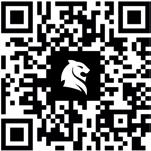

Talent is how we do both for our clients.
The best way is to help our clients thrive with solutions that are considered and effective, our diverse talent put their analytical skills and creativity to work in solving for both.
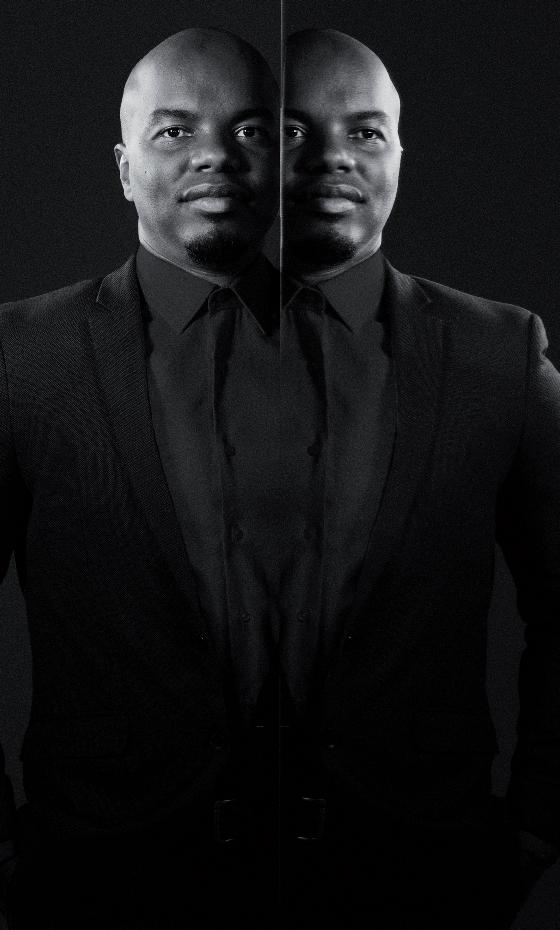
called extremophiles – organisms that can survive in extreme environments, such as deep under the ocean, in hot springs, or in the frozen tundras of Antarctica. The discovery of these organisms has expanded our understanding of the conditions under which life can exist and has opened up the possibility that life could exist in even more extreme environments on other worlds, such as planets or moons in our own solar system, e.g. Jupiter’s moon Europa and Titan, the largest
Beyond the ongoing search for biological signs, is the search for extraterrestrial intelligence (SETI). This field seeks to detect signals from intelligent civilisations that may exist in the universe. It is an important aspect of the search for aliens which is based on the notion that if there are intelligent life forms out there with remote communication technologies, we might be able to detect some technological artefacts. These signals can come in different forms, such as radio- or visible-wave regions of the electromagnetic spectrum. This study provides insights into the nature and distribution of life in the universe. Additionally, the discovery of SETI could have profound implications for our understanding of the universe
The search for extraterrestrial life is one of the most monumental and significant endeavours humankind has ever undertaken. It is also an exploration full of subtleties and complexities. One of the biggest challenges faced is simply the vastness of the universe. Even if life does exist on other planets, the distances involved are so great that it may be impossible to detect or to establish communication. Another challenge is the limitation of our technology. Our current methods for detecting exoplanets and searching for signs of life are still relatively crude, and it may be many years before we have the tools we need to make more precise measurements and observations.
In spite of the world’s seemingly endless string of catastrophes, the search for extraterrestrial life remains one of the imperative scientific frontiers of our time. The possibility of finding life beyond Earth opens up new avenues for scientific exploration and discovery. It has the potential to provide us with valuable insights into the origins of life, the evolution of species and the potential for life elsewhere in the universe.

Irrespective of whether we find definitive evidence of extraterrestrial life or not, the search itself is a testament to the human spirit of curiosity and exploration, and a reminder of the vast mysteries that still await us.
Victoria N Nakafingo
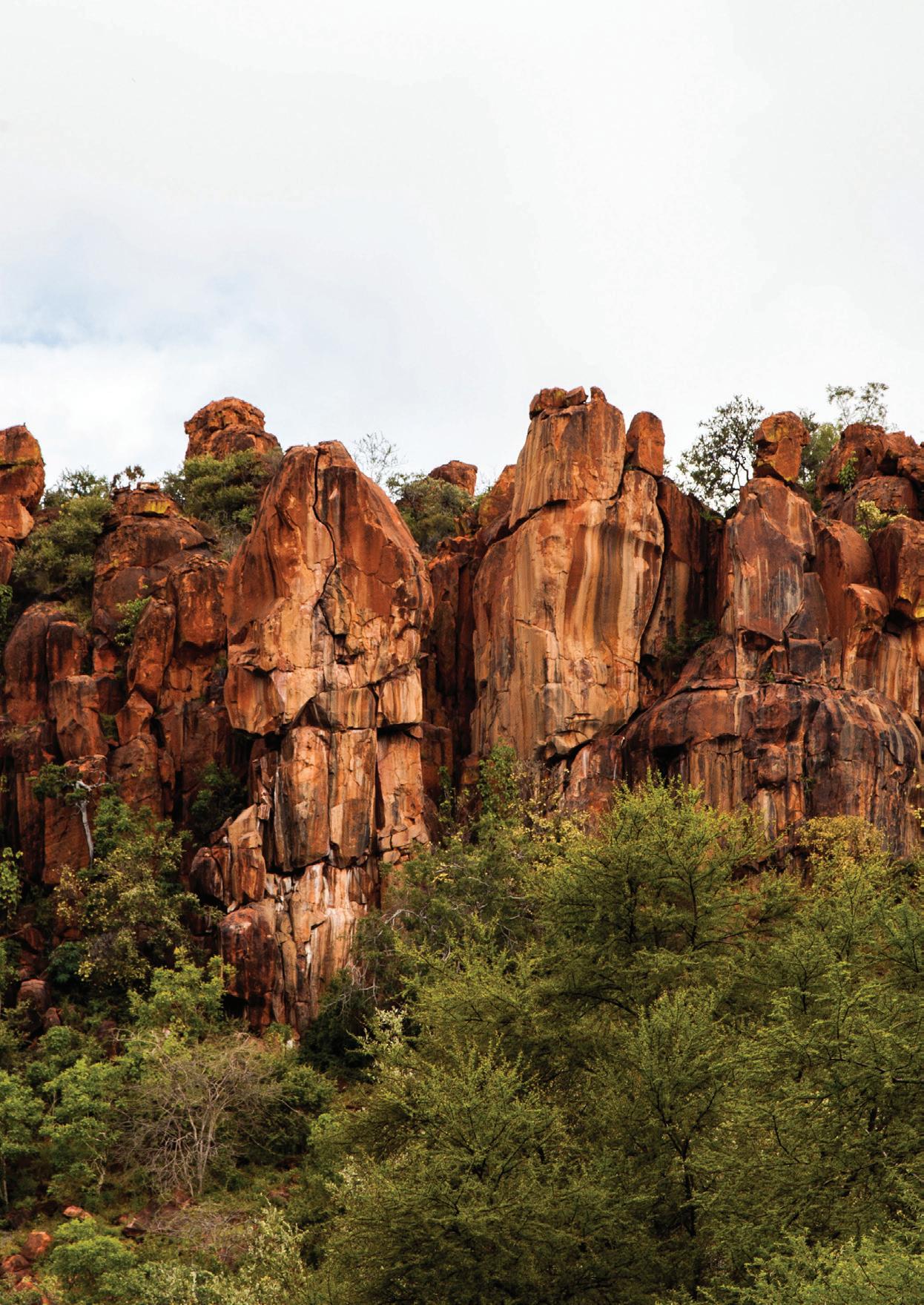
Rising as an island of colour some 200 metres above the surrounding African bush and savannah, the Waterberg Plateau, with its flamboyant brick-red sandstone formations and lush green vegetation, is without a doubt the main drawcard of the region. Other attractions nearby are the Hoba meteorite, the Otjihaenamaparero dinosaur footprints and the Dragon’s Breath underground lake. Tsumkwe, the administrative centre of Bushmanland, is home to a large San population and the southern gateway to the Khaudum National Park.
In 1972, the 405 km² Waterberg Plateau Park was proclaimed as a reserve for endangered and protected species. The history of the park began on 15 June 1956 with the declaration of two portions of the plateau as natural monuments. This came to pass after representations were made to the then SWA Administration by the Kameradschaft Ehemaliger Deutscher Soldaten, members of the Scientific Society, the Monuments Commission, and other interested parties. The two areas – the Omuverume Plateau and the Karakuwisa Mountain Range – were, however, divided by farms that had been allocated to farmers in the past. The Omuverume Plateau boasts probably the only sandveld vegetation type that developed for many centuries without being disturbed, due to the vertical cliffs and flora there having reached a unique stage of climate development. Interestingly enough, the original motivation for the proclamation of the entire Waterberg Plateau as a park was to create a reserve for eland. It was reasoned that there were about 800 eland in the Waterberg area that moved from farm to farm and caused a nuisance, and that as soon as the farmers were to obtain ownership of the game on their land, the future of these eland would be in jeopardy because the farmers did not tolerate eland on their land. How wrong this proved to be! It was only when farmers were granted ownership of their game that game populations in the country began to flourish and increase.
Today, the Waterberg Plateau Park is home to some 25 game and over 200 bird species. Rare species such as roan and sable antelope, Cape buffalo and tsessebe occur in large numbers.


Species such as black and white rhino are also firmly established on the plateau. The vegetation changes dramatically from acacia savannah at the foot of the plateau to lush green subtropical dry woodland with tall trees and grassy plains at the top. Ten fern species have been recorded at the Waterberg, of which one is endemic to Namibia and Angola. There is also an impressive range of flowering plants, including the conspicuous flame lily, Gloriosa superba
On the site of the historic Battle of Waterberg, at the foot of the plateau, a graveyard serves as a reminder of a turbulent period in history. Soldiers from the Schutztruppe who died in the fierce battle between the Herero and the German colonial forces in 1904 are buried here.

The superb natural beauty of the Waterberg can be enjoyed by vehicle on a guided game-viewing tour conducted by NWR or easy walking routes along the base of the plateau.
Find more Namibian travel inspiration at www.thisisnamibia.com
Follow @thisis_namibia on Facebook and Instagram for extraordinary Namibian travel stories.
FlyNamibia between Eros Airport in Windhoek and Ondangwa, Rundu, Katima Mulilo, Walvis Bay and Oranjemund, as well as between Hosea Kutako International Airport and Cape Town.
www.flynamibia.com.na
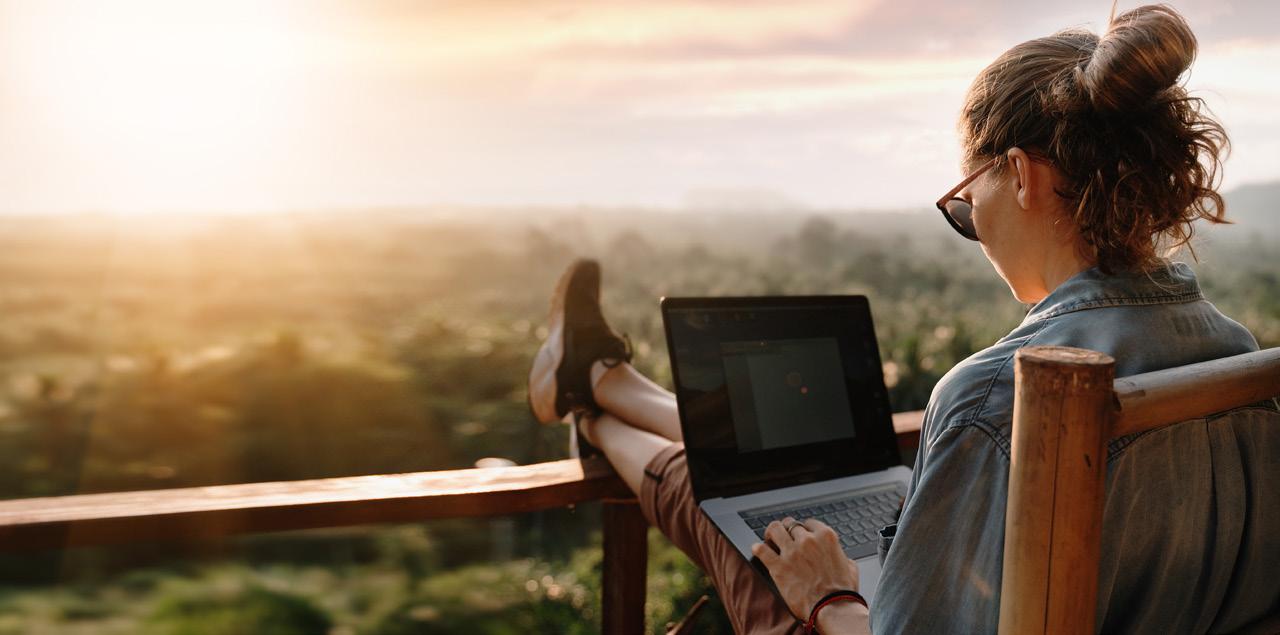
The Namibia Digital Nomad Visa was developed to provide travellers who are yearning for a breath of fresh air, immersing in different cultures while working independently and remotely. The visa is valid for up to 6 months and visitors can create priceless memories, exploring ‘the land of contrasts’ and establishing lifelong contacts, all while gaining a unique international experience.
The visa application is completed online and further bookings for accommodation, flights and vehicle arrangements are easily accessible on the Namibia Digital Nomad Visa webpage: https://nipdb.com/nomadvisa/

It is easy to look at successful people and want to be like them, but Josefina asks, “Are you willing to walk their journey?” This young Namibian is walking the walk in board meetings, the High Court and in her own department at the National Housing Enterprise (NHE).
Josefina Nekongo grew up in a loving home in Grysblock, Katutura. “That love,” she told 99FM, “is the premise for everything.” The house was full of laughter and playful teasing between Josefina and her two younger brothers. However, even as a child she was intentional and wise in her decisions, wanting to help those around her.
She was always a gatekeeper and a protector, enforcing the rules and looking after the younger ones around her. While in Grade 10 at Centaurus High School, she came across the discipline of law and her career path opened before her. Josefina studied law at UNAM, becoming an admitted legal practitioner of the High Court and gaining experience in shipping and administrative law, corporate governance and compliance management.
(MBA) with aspirations of venturing into operations and strategic management.

She says she is motivated by where she was yesterday. “It motivates me to be somewhere else today. Where my journey began to where I am now was much more difficult than where I want to go tomorrow.” Small steps every day outweigh grand leaps that are not sustainable.
At 24 years old, she became a company secretary – an opportunity which shaped her into being someone who takes challenges head on without backing down from her values. Opportunities are never promised, but when they come along, Josefina urges young people to be ready. “Don’t let your youth hinder you,” she says, knowing that young people can be grounded, respectful and trustworthy.
These days she is the legal services, compliance and risk manager and the company secretary for the NHE. She is a council member of the Law Society of Namibia and a board member of the Commonwealth Lawyers Association. The responsibility of managing a department of people, advising boards of directors, and organising AGMs for shareholders is not too much for Josefina. She is also pursuing her master’s in business administration

Seeing people work hard encourages her to do her best, especially women who are stepping into new territory and occupying space. As a manager at NHE, this means acknowledging that there is a legacy of fewer women in certain positions and industries. “As a woman, you have to be failing at something to be succeeding at the other; if she is winning at the office, she is not making dinner at home. My role, the way I see my leadership style, is how can we set performance targets that encourage women to still succeed at home and at the office?” For example, working hours are not that important to Josefina because she is an output- and performance-based manager. “I’m not interested in what time a person gets into the office, I am interested in what they produce,” she says.
Josefina’s career and life advice is simple: be teachable. Use the free resources available to you to capacitate yourself. There are online short courses and the ‘University of YouTube’ is at your fingertips. And then, get a mentor. You can learn from people who have walked the walk, capitalise on their mistakes and not repeat them. “You are never too old or too successful for a mentor,” she told 99FM, “because there is always someone further along than you.”
Seeds have power. They emerge from the soil and grow into something miraculous. Their journey from soil to surface offers a beautiful analogy that resonates with the RuralRevive project – building a desert-based economy – coming into bloom in Namibia’s Hardap Region.
Atransformative and well-rooted project, RuralRevive was conceptualised under the Wolwedans Foundation’s Vision 2030 – The AridEden Project, a practical framework for building more sustainable, resilient and inclusive tourism. It is a medium to long-term development and community revitalisation project taking shape in Maltahöhe, a settlement marred by high unemployment, destitution, pollution and social disintegration – like so many other small villages in rural Namibia that have seen better days.
Maltahöhe is one of those places that is slightly larger than the “blink and you might miss it” varieties, but small and sleepy enough to make you wonder where everyone is… Villagers recall better days when droughts were not as frequent or as severe, when the Karakul sheep farms were thriving, and when youth weren’t forced to seek greener pastures in the country’s larger centres.
Yet, just down the road (by Namibian standards), the oldest desert in the world and Sossusvlei, a UNESCO World Heritage Site, draw travellers by the thousands. With travel and tourism contributing nearly 15% to the nation’s GDP and accounting for a similar percentage of total employment (World Travel & Tourism Council, 2019), one can’t help but wonder how much of that is benefitting the people of Maltahöhe and its surroundings.
For example, supplies for tourism businesses are ferried right through the village on their way to and from Windhoek. But little, if anything, is sourced in Maltahöhe. In response, the Wolwedans Foundation has embarked on
the RuralRevive initiative in partnership with the people of Maltahöhe to turn their village into a strategically located potential distribution hub.

RuralRevive’s overall objective is to revitalise the local economy through a number of development opportunities that match the demands of the tourism sector in the region. Five initial focus areas are in the planning and implementation phases:
1. MALTAHÖHE LAUNDRY: solar-powered with grey water recycling to enhance sustainability.
2. HORTICULTURE: capacity building with local farmers and youth, as well as providing greenhouse and irrigation infrastructure to grow organic fresh produce both for the tourism market and to improve local food security.

3. THE BARN: an essential distribution hub and physical marketplace to centralise supply and demand, combined with a digital app to communicate what is on offer (or in demand) and provide a cashless trading environment.
4. CLEAN-UP: reducing landfill and landscape pollution through a Trash-to-Treasure concept to reuse discarded items and repurpose them into marketable goods, thereby simultaneously creating a healthier living environment and small-scale livelihood opportunities.
5. DESERT RUNNER: transport service to “connect the dots” for categorised delivery and collection of laundry, fresh produce and waste.
Overarching activities include enterprise development / diversification as well as EconoMix training – a tailor-made,

entry-level business basics offering to empower aspiring entrepreneurs in the emerging desert-based economy.
The direct beneficiaries of the RuralRevive project are the marginalised women, smallholder farmers, youth and entrepreneurs in the communities of Maltahöhe as well as the surrounding Daweb Constituency. The indirect beneficiaries are lodges and tourism enterprises in the NamibRand and Greater Sossusvlei areas that tap into services delivered by the desert-based economy.
Through a well-represented Steering Committee, the project has managed to build collaboration, community trust and ownership, while seeking to connect the different socioeconomic groups to the following benefits:
Residents including women and youth have been attending technical horticulture workshops as multiplier trainees to encourage and support the establishment of more community gardens. The project aims to capacitate more than 150 communal and commercial farmers in Maltahöhe and the vicinity. Complementary media literacy workshops have been held with local school groups to enhance communications and promote RuralRevive and related storytelling by nurturing local reporters.
Construction and renovation of infrastructure secured under the project has already provided employment to several young men and women. This is expected to increase with the official opening of the laundry, The Barn and an envisaged recycling collection point, all of which will create local jobs. The RuralRevive laundry in fact opened its doors to the public on January 21st this year, with the potential for employing about 14 staff members from the community once it is fully operational.
Local micro-businesses as well as lodges will derive mutual economic benefits from services made available and from emerging entrepreneurial opportunities – connecting smaller goods and service providers to the demand of larger enterprises.
Residents will have access to healthy and nutritious food produced through the locally available food system, made possible by the horticulture training programme and the establishment of backyard and community gardens and a price guarantee system – a benchmark price for buying surplus from producers and donating them to orphanages, schools, soup kitchens and even churches dealing with vulnerable groups.
RuralRevive is an ambitious undertaking that calls on the support of tourism operators across the Greater SossusvleiNamib Landscape. But at a time of increasing economic inequality, it presents an opportunity to collectively shift our focus as tourism stakeholders and do things differently, creating more resilient, inclusive conservation tourism economies along the way. It is a seed that will organically grow to transform the community of Maltahöhe.
’’RuralRevive is very organic and rooted in our community. I appreciate the fact that the project offers a shift from a "hand out" approach. I see an abundance of opportunities with respect to fresh produce production. Markets have been a big challenge, so RR provides a vehicle. We are putting the pieces of the puzzle together and this is the start. On the tourism side, the transport solution will provide the linkage to local produce and fill the gap. RR is the vehicle to bring opportunities together.’’ ~ Marika Raves, Owner of Maltahöhe Hotel and Member of the Steering Committee.
Reinhold Mangundu
VISION – We have the development of Namibia and the wellbeing of its people at heart. Since its inception, Wolwedans has been guided by an approach where people, the planet and profit are equally important. Over the last decade, the Wolwedans Foundation, through its vocational training programmes, has trained in excess of 250 young Namibians as part of its corporate social responsibility.
MISSION – People Matter. We want our team, and Namibians as a whole, to enjoy improved livelihoods and practice sustainable lifestyles. We commit ourselves to this goal by prioritising human resource development, social upliftment, sharing economic opportunities and encouraging others to help build a better tomorrow. As a responsible corporate citizen, we are committed to continue our investment in human capital development. To broaden the scope and increase trainee output, The Wolwedans Foundation seeks like-minded partners who can come on board and assist us in achieving our goals – for the benefit of our country and its people.
RuralRevive updates are available on www.ruralrevive.org, while requests for more information, ideas, and offers of support can be directed to info@ruralrevive.org
From top, left to right:
Nobody knows how many skeletons are hidden by the cold waters of the Atlantic Ocean and the sand of the Skeleton Coast. Some man-made remains of mining activities are visible in the water and on land.

Skeleton Coast National Park does not only protect animals but also plants and the very sensitive landscape. The Welwitschia, a near endemic plant of Namibia, is a living fossil that can reach an age of several hundred years. It is only found in the Namib Desert and adjacent arid areas in southern Angola and northern South Africa.

Cape Cross is the biggest breeding colony of Cape fur seals on Namibia’s coast and tourists can get very close to these marine mammals.

At Cape Cross two 2-bedroom houses and five 1-bedroom houses were built for MEFT staff, and two existing houses were renovated. The old office was converted into a guest house.

Scavengers are found everywhere on the Skeleton Coast: like the Pied Crow feeding on a dead Cape fur seal.

This is the spot where the Portuguese explorer Diogo Cão erected a padrão (limestone pillar) in 1486. He and his crew were the first Europeans to set foot on Namibian soil. According to old documents there were no seals at Cape Cross.

Nobody knows how many skeletons are hidden by the cold and rough waters of the Atlantic or under the sand of the Skeleton Coast in Namibia. They are not only the remains of vessels and poor nameless souls from the days of sailing ships and early explorers, but also from modern times when sailors and pilots went missing on Namibia’s notorious north-western coastline. A number of skeletons are visible in the sands of the Namib Desert between the Ugab River mouth in the south and the Kunene River in the north. They are from marine and land mammals, sometimes reptiles and birds. But there are man-made remains too, mainly from mining days and tragic accidents.
This narrow stretch of coastline, measuring 16845 km², was proclaimed a national park in 1971. The 8118 km² area south of the Ugab River mouth down to the Swakop River, became Dorob National Park in 2010. Before that it was known as the National West Coast Recreation Area. Within Dorob National Park, 120 km north of Swakopmund, is the Cape Cross Seal Reserve. It was proclaimed in 1969 to protect Namibia’s biggest breeding colony of Cape fur seals. The reserve covers an area of 60 km². At Cape Cross the Portuguese explorer Diogo Cão erected a padrão (limestone pillar) on January 9th, 1486.
The Skeleton Coast is mainly known for the numerous skeletons of seals, whales and dolphins found on the beach above the high water mark. But this barren landscape is also home to animals which have adapted to the harsh desert conditions. Desert-adapted elephants, lions and giraffes encounter desert animals like the brown hyena, black-backed jackal, springbok and gemsbok who are known to live in arid areas and on the coast of this unique part of Namibia. It is tough for animals and plants to survive in the Namib and – especially in the early days of conservation, mining and exploring–even the men and women stationed in these areas had to be a special breed of people.
To make it easier for staff of the Ministry of Environment, Forestry and Tourism (MEFT) to perform their duties in Skeleton Coast National Park and the Cape Cross Seal
Reserve, new infrastructure to the tune of N$136 million was set up within 18 months and officially inaugurated at Springbokwasser by the Minister of Environment, Forestry and Tourism, Pohamba Shifeta, and the German Ambassador to Namibia, Herbert Beck, on 27 April 2023. The KfW Development Bank on behalf of the German government financed the project together with MEFT as part of a NamParks (Namibia National Parks) programme. New houses, offices, garages, service buildings, wastewater treatment plants and new PV power supply systems were built at Ugabmond, Springbokwasser, Möwe Bay and Cape Cross. At Cape Cross, Ugabmond and Springbokwasser new entrance gates were installed and at Möwe Bay a new symbolic gate. New recreation facilities for staff were built at Springbokwasser, Möwe Bay and Ugabmond.

Ugabmond is the southern entrance to Skeleton Coast National Park, Springbokwasser the eastern gate and Möwe Bay, which is not open to tourists, is a coastal station 80 km north of Terrace Bay.
Dirk Heinrich
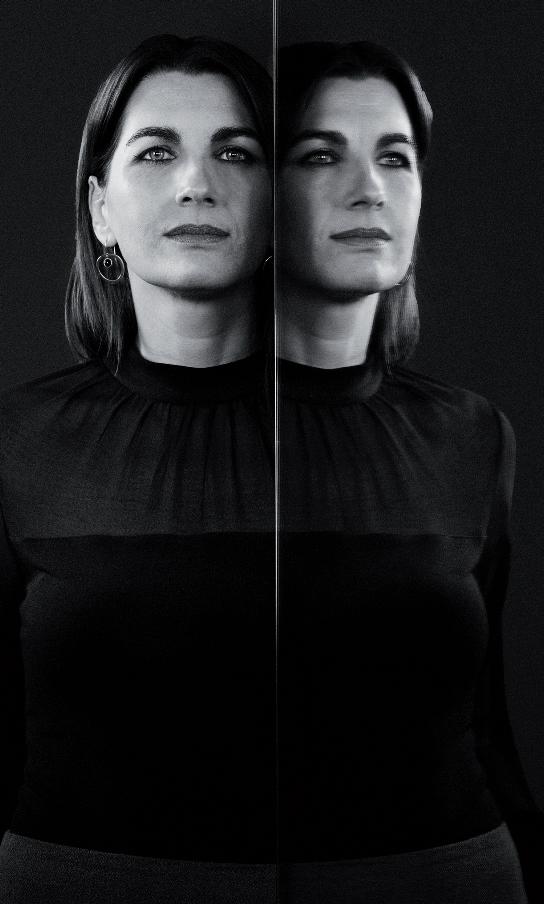
When economies of the future are being defined by technology, we embrace the power of real relationships. The diversity of our people allows us to embrace both.
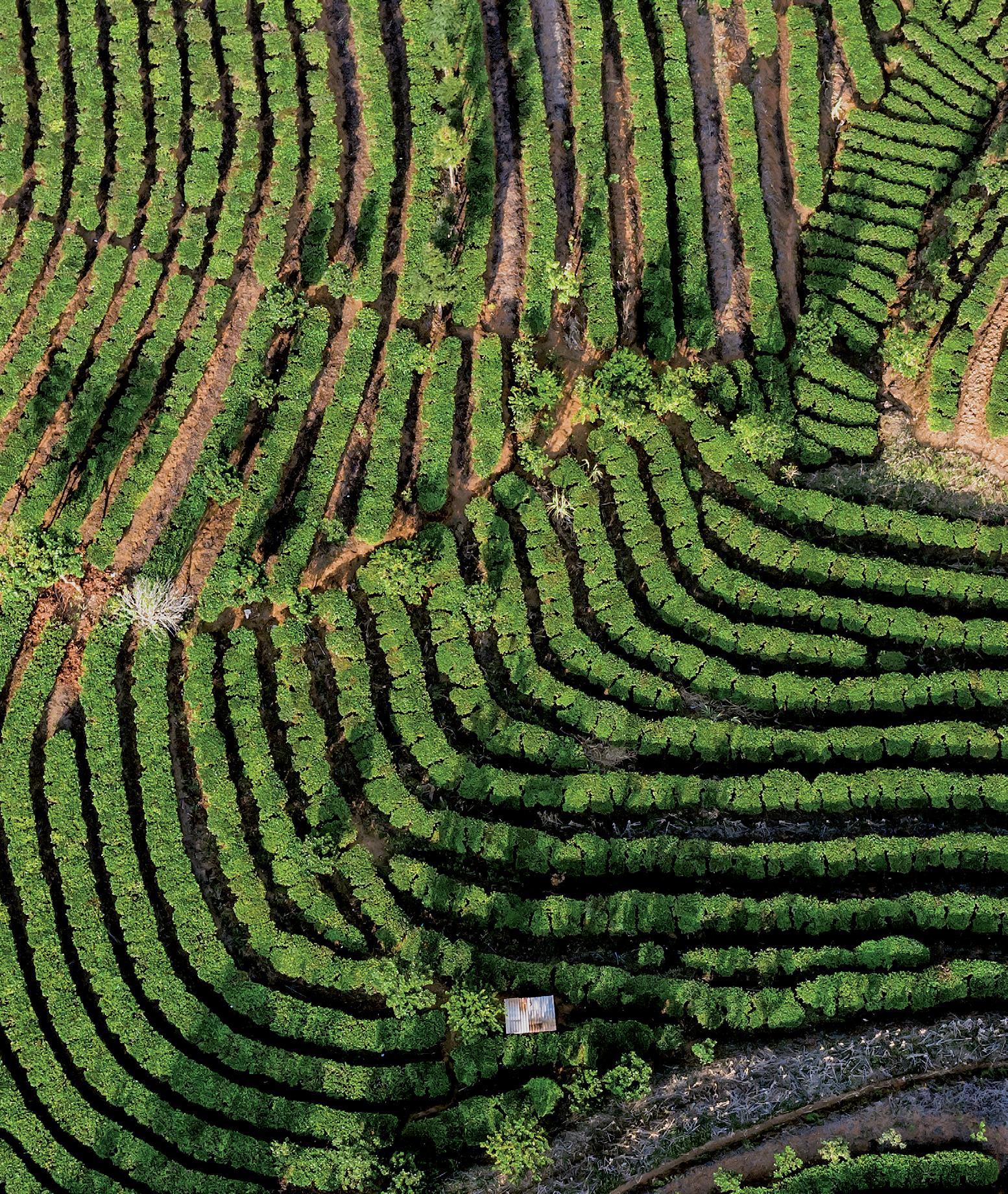

Life has not been kind to the young man, who lost interest in school while in Grade 10 after losing his grandmother, whom he describes as the anchor of the family. To add insult to injury, Hendrick’s father passed away one week before his legs were amputated. Despite all this, Hendricks maintains a positive attitude in life. “I am pretty good with my hands. I can do anything. I am the type of guy who, when I see that something is not right, it catches my eye. I feel frustrated and want to fix it,” he says.
This determined young man believes anything is possible, and encourages peers never to give up no matter what your
 Josia Shigwedha
Josia Shigwedha


In addition, it will also aim to maximise the benefits to Namibian citizens from petroleum resources through the enhancement and development of strategies that will target phased participation of Namibian companies, labour, goods and services, along the value chain.
Sharing a similar sentiment, Mines and Energy Minister Tom Alweendo said: "It has been proven that countries with strong institutions, a stable political system and an effective legal framework were able to manage their oil revenue with a positive impact on their economies and for the benefits of their citizens."
The Ministry of Mines and Energy’s Petroleum Commissioner Maggy Shino says Namibia should not fall prey to disintegration due to reckless borrowing and spending as well as weaker monitoring and evaluation policies, owing to the discovery of oil in the country.
Shino said history has proven that the majority of countries where oil has been discovered have been left in ruins.
"Economic mismanagement can be another aspect of convincing oneself that prosperity is still coming due to ongoing drilling, thinking money is coming in. On the other hand, at the grassroots level, people will stop cultivating mahangu fields because of oil availability, don’t worry money is coming.
"Unsustainable debt, the mindset of, I am going to take all the billions of dollars because I know finances will start flowing in. There are also socio-political issues we have to ensure that are there. If you don't have strong institutions, weak regulatory framework, lack transparency, all these issues can break the nation," Shino said.
The Petroleum Commissioner said this at the ongoing stakeholders’ workshop on the draft National Upstream Petroleum Local Content Policy.
The policy, once finalised, will seek to create an internationally competitive petroleum sector that maximises the benefits to the country through meaningful and sustainable participation by Namibians and local companies across all areas of the value chain.
Alweendo is hopeful that the established sovereign wealth fund – Welwitschia Fund – which is to be used as an investment holding where royalties from all mineral resources sold in Namibia as well as some tax revenues and money raised by the government will be invested, shall amplify the potential benefits to be realised from the petroleum sector.

"I have reason to believe that our institutions, our political system, and our legal framework are such that there is no reason why the oil discovery should not be a blessing. What we need to do, however, is to manage the resources with a clear understanding that the resources belong to both the current and future generations," said an optimistic Alweendo.
The stakeholders’ workshop on the policy follows the discovery of oil offshore Namibia, hence the government’s stance to craft regulations and policies that will govern the nascent oil industry.
A third discovery was announced in March of a significant presence of light oil in the Jonker-1X deep-water exploration well, located in the offshore region approximately 270 kilometres off the Namibian coast.
The exploration was carried out in partnership with QatarEnergy and Shell, as well as National Petroleum Corporation of Namibia (NAMCOR).
The Jonker-1X well was drilled in the Orange Basin, Block 2913A & 2914B (PEL 0039) using the Odfjell Deepsea Bollsta semi-submersible rig to a depth of 6,168 meters in a water depth of 2,210 meters.
In 2022 QatarEnergy and Shell made the debut discovery in Graff-1 PEL-39 in the orange basin. Currently, the investors are conducting appraisals to determine the commercial
viability of the oil. There are 37 active exploration licences, and 36 dry wells have been drilled in Namibia prior to the recent discovery.
Shino also pointed out that Namibia is still a high risk exploration country due to the sophistication of operating in deep water exacerbated by a lack of existing infrastructure for the industry.
standardised institutions in line with Heineken requirements. He also announced that N$25 million will be earmarked for SME development for the next five years.
“We are going to localise production. As we stand Distell still imports from South Africa, therefore we are going local in as much as we can in our manufacturing footprint here in Namibia and for the years to come," he said.
“This we believe will be good for the consumers as they will have a variety of choices and eventually good for the economy as we localise production within. We intend to be here for generations and not only years, and through time you will get to know we are good corporate citizen.”


In reassuring President Geingob, Brink emphasised that Namibia would maintain its heritage of NBL and that not much would change. "The name will remain the same, we don't intend to change anything, we shall build on the legacy of O&L's NBL legacy, because this is a proud company whose name is associated with all Namibians," Brink said.
Heineken NV, the Dutch brewing company, has reiterated its commitment to localising production in Namibia following its recent acquisition of Namibia Breweries Limited (NBL) and Distell Holdings Limited. The move is expected to boost the economy, procurement chain, and provide employment opportunities.
During a courtesy visit to President Hage Geingob on Friday, Heineken International Chief Executive Officer and Chairman, Dolf van den Brink, confirmed that Heineken would merge NBL and Distell to make it a larger company with a full portfolio of Namibian beer brands, ciders, wines and spirits.

Brink stated that the company will localise production in Namibia and empower SMEs to grow and transform into

President Geingob welcomed the commitment to localising production in Namibia and creating jobs, adding that it was important to keep the government informed to develop and industrialise the country. "Now that you have it, don't take it to Holland," Geingob joked.
To this the Heineken CEO said, "it may seem as if everything is Heineken Beer, but from what it trades globally, Heineken beer constitutes only 25% while the rest is formed by native brews in such countries we operate. Therefore, us taking over NBL means we shall expose Windhoek Lager and Windhoek draught to more markets, with the brand that shortly."
Heineken has been in Namibia since 2003 as the second largest investor in NBL when partnered with O&L. According to Brink, the acquisition of NBL and Distell is the biggest investment Heineken has undertaken in a decade.
Petrus Maria Johannes Simons was last month appointed the Managing Director of Namibia Breweries Limited (NBL) with effect from 14 April 2023, taking over from Marco Wenk, who resigned from the position following the completion of the deal.
Millions of people are pushing through what often feels like a struggle against themselves, and millions are trying to understand what mental health disorders entail. Awareness is the first step to closing that gap. Mental health disorders affect everybody regardless of race, colour, gender, age, or nationality. Some mental illnesses can be treated, while other conditions can be rehabilitated to improve quality of life.
Visit our page https://www.rmanam.com/healthmatters/ or scan the QR code for an introduction to Mental Health Awareness. Join Our Namibian specialists in video seminars on unique topics surrounding mental well-being and gain access to an expanding library of mental health articles.
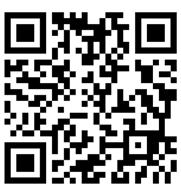
One in ten people lives with a mental health disorder.
According to research, up to 26% of the Namibian population suffers from mental health disorders.
A Higher percentage of females report suffering from mental health disorders compared to males.
More than 792 Million people live with mental health disorders worldwide.
Poor Mental Health can increase the risk for long-lasting, chronic conditions like heart disease.
If you do not experience mental health issues, you likely know at least one person who does; if you struggle with any mental health disorders, you are not alone.

We love being part of making your

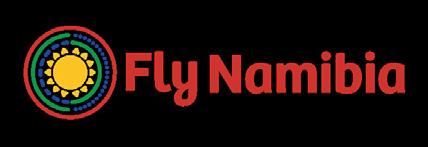



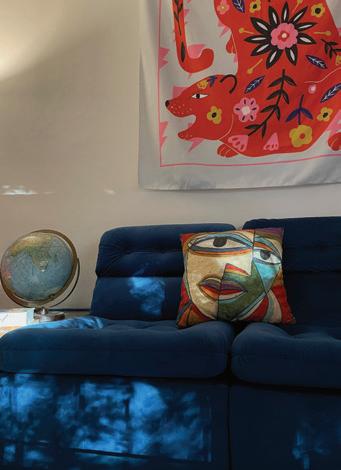
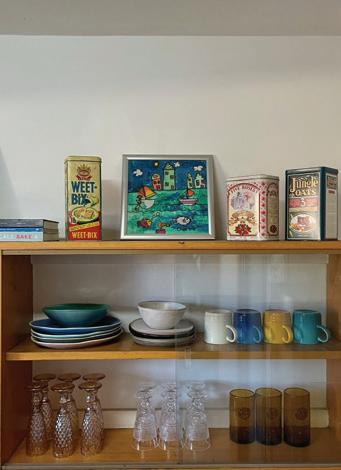
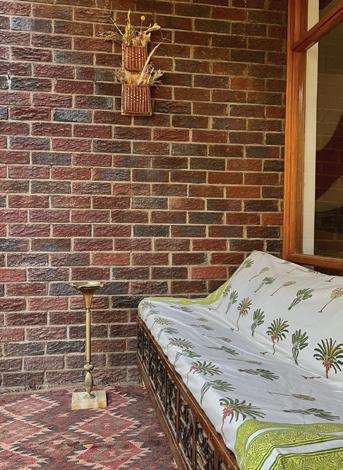

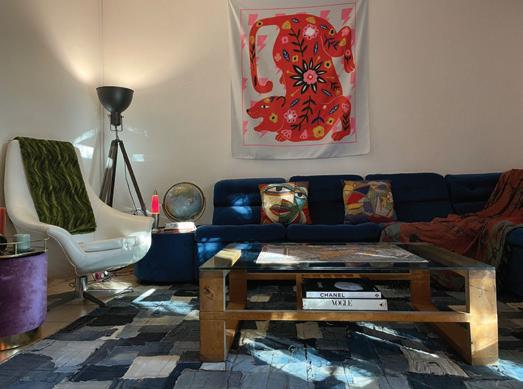
Moving out of the family home is a major milestone in anyone's life, especially when it is the first solo move. This was the case for Charene at the start of January 2023. She decided to cut her holiday a little short for the big move into her first flat. She had finally found the perfect place after months of searching for the ideally located and priced property to make the leap from the nest. She says that as soon as she walked in, she knew this was the place for her. It has a unique character and ample space for her to decorate it in her own eccentric style.
Before moving, Charene lived with her mum. While this cut her costs (such as wifi, electricity and groceries), she feels that having a whole space to herself is worth every penny. She misses her dog, but luckily there are neighbourhood cats who make their rounds and give her a dose of furr love. Having her own place to call home and the independence that comes with it does not compare to living with a family member.
Finding the perfect flat at the perfect price is quite a challenge. Charene had been scouting for quite some time, and everything on the market seemed either too modern, bland, or overpriced. She had just given up on her search when her pozzie popped up on Facebook. This 70s-style spot with ample character immediately wowed her. Signed and sealed within 24 hours!
Lights flicker in the living room as a popular series is projected onto an adjacent wall. Charene has opted for a projector instead of a TV. “There’s something so nostalgic about watching films and series this way. I have grown up with a similar TV setup,” she explains. And she finds herself being much more mindful of what and how much of it she watches.
Her favourite part of the flat is this very living room. It is spacious and inviting, with all her cherished pieces of furniture in one place. This is where she decompresses and gets creative around the coffee table. She often finds herself just observing her living room and feeling absolutely chuffed with how cosy and cool it looks. t.
Her best-loved piece of furniture is without a doubt the headboard and side-table unit in her bedroom. It is an heirloom from her grandmother, jazzed up with a fresh
coat of the most gorgeous shade of green paint, and reupholstered with a custom velvet botanical print. “They don’t make them like this anymore!”, Charene beams.
The Elke Le Roux painting in the foyer/dining area is her art pièce de résistance. It is monotone with a pop of red. A beautiful large lady standing sentinel over the whole entryway. This print was a gift from her dad while she was still in high school, after she dropped many hints and pretty much insisted that she must have it. A timeless piece of art. Most of the furniture in Charene's flat are heirlooms. She is very lucky to have a mum who has always had a keen eye for interiors, and a grandmother with great taste. The blue velvet sectional couch and retro white bucket chairs used to belong to her gran, and the large vanity in her bedroom was once her mother’s. Charene has fond memories of these pieces and is always reminded of their origin and stories whenever she uses them.
There is this dainty hand-held fan hanging above Charene's bed with little blue birds hand-painted on textile. She bought it for N$20 at a charity shop in Walvis Bay, and it always reminds her of the hidden gems she can uncover while travelling off the beaten path.
For Charene, one of the most important elements that makes a house a home is lighting. She is a firm believer in never using the big light but instead warming up spaces with lamps and other ambient lighting. Soft, warm light, including the soft pink glow of her lava lamp, really makes a home feel cosy.
Each item in Charene's flat tells a unique story and holds sentimental value. They bring a sense of comfort and familiarity.
Living alone has allowed Charene to truly embrace her own unique eclectic style and personality, something that may have been harder to do living with others. She takes great pride in her home and enjoys entertaining guests.
“I also believe a home is made by the knick-knacks and trinkets that tell stories of the people who live there. The family photos, the books and organised chaos – that makes a house a home!” Charene's flat has quickly become her sanctuary, a place where she can relax, recharge, and be herself. She feels grateful every day for this new chapter in her life and looks forward to all the memories that will be made in her special place. Home is, after all, what we make of it.
Our homes are our havens, and having a space in which you feel genuinely comfortable and at peace can be a balm and bolster.


Telecom Namibia CEO, Dr Stanley Shanapinda, is set to be appointed as the new chairman of the Southern Africa Telecommunications Association (SATA). Dr Shanapinda will lead the organisation for the next 12 months. This comes in the wake of SATA’s 43rd conference, which was hosted by Telecom Namibia.
Delegates from the Southern Africa Telecommunications Association (SATA) member states converged in Swakopmund on the 26th of April to attend the regional conference for 2023. The three-day conference was hosted under the theme “ICT Connectivity and Service Delivery for the Benefit of All: Transforming our Society through Broadband and ICT Developments”. The aim was to share experiences on a wide range of topics including technology, infrastructure, policy and strategy for the future of the telecommunications industry. Leaders from the Namibian government joined ICT industry players in the Southern African region to oversee a conference that would focus on key deliberations aimed at propelling services in the region to deliver world-class services to the people of the region.
Dr Shanapinda expressed that the presence of ICT services is a key determining factor for investors. The absence of ICT services in any area hampers effective engagement with authorities, potential trading partners and customers, among others. ICT services are thus essential to the
success of most, if not all businesses. He saw the event as an opportunity to provide a platform for discussions that will drive regional solutions to strengthen economic and social demands, as well as offer improved coordination of capacity networks through the enhancement of regional and global communications.

“It is this ongoing dialogue and engagement that will allow us to stay abreast of developments within the region and globally. Through benchmarking with peers in the region and sharing key learnings, vendors and industry solution providers can compare notes and further improve service delivery to the people of the region. We hope the discussions will accelerate the transformation of the ICT sector in the Southern African region to be on par with the rest of the world and to exceed the expectations of our respective governments, corporates and residential customers,” Dr Shanapinda added.
Congratulations, Dr Shanapinda. We celebrate your appointment!
ICT services are thus essential to the success of most, if not all businesses. It is this ongoing dialogue and engagement that will allow us to stay abreast of developments within the region and globallyResources Credit: Telecom Namibia press release & The Brief Namibia Powered by






Cocktails at Caprice, a cat on a leash, weekend markets, thrifting and fitness. The list of essential Cape Town living is endless. In a city of over four million people, lifestyles differ from one Capetonian to the next. It is this contrasting nature that makes exploring this city such a cultural experience, and naturally, why Namibians love it so much.
Undoubtedly the best way to go about Cape Town (or travelling in general) is by doing it like a local. Fortunately for the vagabonds, the only way to immerse yourself in the local lifestyle is by spending enough time in one place to pick up the subtle nuances, the comings and goings of the people who call this place home. I recently spent a week in the Mother City, and here is my take on how to unlock your inner Capetonian.
Before you go anywhere or do anything, establish where the nearest Wengen is. A Wengen is an Engen fuel station with a Woolworths 24-hour shop. Probably the most Cape Town thing I can think of is a 24/7 Woollies. Locals grab convenient lunches here during weekdays, quickly stock up on a few essentials for dinner before heading home, stumble in for a midnight snack after clubbing, and get drinks and food supplies for a beach picnic.
As a visitor to Cape Town, a Wengen is invaluable for its convenience, affordability and the fact that it won’t take you 20 minutes to find parking, unlike a real Woolworths in one of the city’s many malls. Since exploring burns a whole lot of energy, a Wengen might just be your saving grace, but not simply as a refuelling exercise, because these shops truly encompass the food scene in Cape Town, albeit in a quickshop fridge.
I have written fondly of the open markets in Namibia’s north, where thrifting is a cultural, bend-over experience. In Cape Town, it is a hipster’s dream. On Lower Main Road in the Observatory suburb is a single street lined with uber-cool vintage and thrift shops, cafes and record shops. These thrift shops pump music on vinyl and offer fitting rooms and rails on rails of well-priced, pre-loved clothes.
While both the open markets and Cape Town’s thrift scene get their clothing from the bales of unwanted fashions from the west, in this city it is a lot more curated. The best part of thrifting here is not just the great second-hand shops, but
the buzz of locals on the hunt for Doc Martens and buskers drowning out the city’s white noise, elevating Cape Town into people-watching and picture-taking heaven.
In Namibia we fondly call them Portuguese corner stores. In Cape Town they are called spaza shops. Whatever you do, do not call them superettes, no matter what is written above the door. I made the mistake of asking a waiter where the nearest superette is, and he had no idea what I was talking about. Faux pas!
Spaza shops are the real, gritty convenience stores. And while they might not stock Angus beef fillets like the Wengen does, their offering is impressive. Great home-made samoosas, cooldrinks, chips and cigarettes are their forte. But it seems only true locals know about the genius in their midst: Paaper bites. These are little packets of crisps, cut-off excess wrappers from samoosa dough, spiced to MSG perfection. Rumour has it that the “secret” signature flavour is Aromat. And it doesn’t get more South African than that!
The greatest intersection of travellers and local Capetonians is flocking to one of the many beaches on offer in the city’s western peninsula. But naturally, locals have insight to the lesserknown spots, like Bakoven. Not so much a beach as massive boulders stretching into the Atlantic from classic surfer cabins on the shore.
My local friends and I happened to miss the right turnoff (Cape Town driving is not for the novice) and stumbled on a secluded beach, from which we could spot a group of Capetonians celebrating some kind of special occasion. And then we packed out onto the picnic blanket our own spread of Wengen goodies and Paaper bites.
Unfortunately for the alternative kids in Namibia, having no place to get film developed means film photography is not viable. Which is why I jumped at the first opportunity to buy a disposable camera the moment I arrived in Cape Town. Here, rolls of film are developed in less than 24 hours at almost every camera shop, and a WeTransfer link to your images lands straight in your inbox.
Few things capture Cape Town’s street art, beaches and people like the soft, grainy filter of film. And what better way to sum up your week’s worth of gallivanting through the Mother City than with an album of 36 aesthetically vintagelooking photos.
Charene Labuschagne
Undoubtedly the best way to go about Cape Town (or travelling in general) is by doing it like a local.





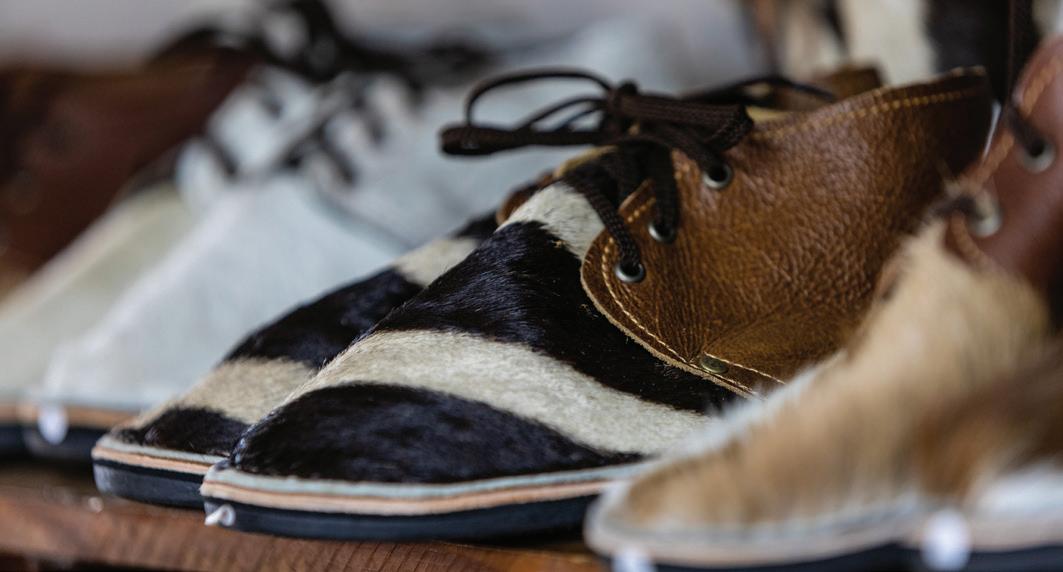
Swakopmund has become synonymous with something you would not necessarily associate with the picturesque coastal town better known for its colonial-era German architecture, including the prominent lighthouse, or outof-place guinea fowl roaming the streets in residential neighbourhoods. Over the years, a small leather shoe manufacturer has been steadily producing a type of footwear that is much loved by locals for function and style. Tourists also get hooked on these shoes and take them back to the far corners of the world.
Velskoene made by African Leather Creations have become a Namibian icon, easily spotted by the small label embroidered with the words Kudu Leder (German for kudu leather) sewn on the throat line of the shoe. As an easy way to identify what brand of velskoen you are looking for, people simply started calling them Swakop Vellies – a name that the new owners of the company have embraced almost like a badge of honour. The company is also the oldest manufacturer of these shoes.
Erwin Leuschner and Lee Coetzee, two Swakopmund locals, bought Africa Leather Creations from previous owner Herbert Schier and took over operations in September last year. As Erwin explains, it wasn't a rash decision to buy this business which had been passed down through two generations of the Schier family. It has sentimental value, like a treasured family heirloom invariably has. Something they, as the new owners, have to look after and continue with.
Herbert Schier’s father Ewald started the company as a seal skin tanning business in 1938. It was only in the 1960s,
however, that they branched out into velskoene – thanks to a Baster gentleman called Hermanus Beukes. He was looking for work and making these leather shoes was his trade. Ewald Schier saw the potential and started producing these shoes as we know and love them up to this day. Herbert took over after his father’s death in 1980. In the early 2000s he was forced to close the tannery as a result of Swakop’s changing town regulations which did not allow for this type of business in the city centre. But he continued with the shoes. Now in his 80s, he decided to pass the baton to a younger generation.
As Erwin takes me through the workshop to show me the incredible craftsmanship of the staff, it is fascinating to see that the shoes are still entirely handmade. Cutting, stitching and gluing are second nature to these artisans who can pump out around 70 pairs of vellies per day. Erwin shows me the differently coloured hides that are destined to become shoes and explains why each shoe is adorned with the classic Kudu Leder label. “When Ewald Schier started to experiment with different leathers he discovered that kudu is the strongest. Therefore kudu is used and the label is still stitched to every shoe”, he says.
Erwin and Lee intend to boost the legacy of this iconic brand by sticking to what made this type of shoe sought after over the years. The two of them have come up with some fresh ideas, like the limited edition Namibian flag vellies. They also opened an online store – which is perfect to get a new pair when you don’t have the opportunity to visit Swakop.
African Leather Creations are located opposite the Swakopmund municipality at 22 Rakotoka Street, or visit swakopvellies.com.

The largest global banking crisis since 2008 emerged in March this year, resulting in US regulators shutting down and selling three small- to mid-sized banks over the span of five days. In the same month, in Europe, troubled Swiss giant Credit Suisse was taken over by a rival bank in a forced rescue deal. This article explores the situation that got us here and whether Namibian banks (and depositors) are facing the same risks.
The basic business model of a bank is simple: banks encourage customers to deposit their money into accounts held with the bank. These deposits serve as a crucial source of funding for the bank’s financing activities, and as such, the bank will pay interest on certain types of deposits to incentivise customers to keep their money in the bank’s accounts for longer periods. The bank then has a choice to either lend the money out to borrowers, at a higher interest rate than it is paying on its deposits, or to invest it in fixed-income (debt) securities, earning income on these holdings.
There is, however, a bit of a timing issue. See, borrowers need the money for a fixed time period when financing an asset that they are buying. For example, overdrafts and personal loans service short-term needs and are thus typically paid back within a couple of months, whereas vehicle loans are medium-term debt, and mortgage loans are long-term. By contrast, depositors generally prefer to have access to their funds at short notice, if not immediately.
Banks have been navigating this maturity mismatch since the inception of banking. They therefore need a so-called sticky deposit base. This is one that provides a consistent and reliable source of funding for the bank’s lending activities. Silicon Valley Bank (SVB), the first of the three banks that failed, primarily served founders, venture capitalists and employees of the Silicon Valley area. The bank had a large deposit base with a balance sheet of approximately US$200 billion (N$3.7 trillion), concentrated in a virally connected group of clients who were sensitive to rumours of trouble. This made SVB particularly vulnerable to a run on the bank. In the case of Signature Bank, more than 90% of deposits were uninsured, making them sensitive to rumours about risk.
The other side of the equation is what kind of assets and loans the deposits were invested in. The 2008 global financial crisis was caused by excessive lending and borrowing in the housing sector in the US, where banks provided mortgages to individuals who could not afford them. These risky mortgages were then bundled together and sold as complex financial products which led to massive losses for financial institutions when the housing bubble burst.
In the aftermath of the 2008 crisis, asset quality grading was implemented. What this means in simple terms is that poorquality assets or loans require more stable funding while high-quality assets require less since they can theoretically be sold easily without incurring losses. The “safest” asset
class banks can invest in is sovereign bonds, which is debt issued by the government.
All banks put some of their funds into these bonds. SVB was a bit of an outlier in that it had nearly 60% of its assets in these government securities, and mostly in long duration bonds. Government bonds are issued at a fixed interest rate, and while these are safe investments (particularly in the US) with a low risk of default, they are exposed to something called interest rate risk.
During the Covid period, central banks dropped interest rates considerably, resulting in the yield on a 10-year US government bond falling to 0.50% at one point. This means that banks that invested in these bonds then would have locked a return of less than 1.00% for 10 years. Central banks, however, subsequently hiked rates aggressively since the start of 2022 to curb rapidly rising inflation. Bond yields rose as a result, meaning that new bonds were offering higher interest rates compared to existing ones, and the value of older bonds with lower interest rates (that the banks were invested in) fell in order to align with the higher-yielding alternatives. Short-term rates rose to over 4%, resulting in higher interest payments on deposits. If SVB were to suddenly sell these assets it invested in, it would thus get significantly less money than the amount deposited by its customers, and it would have to pay higher interest rates on deposits than the bank was earning. Startled customers figured this out and started withdrawing their deposits as quickly as they could, resulting in the bank’s downfall.
When examining the crisis in the US, the question that naturally arises for us Namibians is: are our commercial banks


IJG believes in tailoring their services to a client’s personal and business needs. For more information, visit www.ijg.net


facing the same risks, and how safe are our deposits? Towards the end of March, the Bank of Namibia released a statement in which it reassured the market that the Namibian banks are unaffected by the crisis in the US and that the local banking system remains liquid and well capitalised.

At the end of 2022, Namibia’s commercial banks collectively had roughly 34% asset exposure to government bonds, which is considerably less than the failed US banks were sitting with. In addition, the domestic banks are only invested in short-dated government instruments, which ensures that there is less of a maturity mismatch between liabilities (deposits) and assets (loans and investments). These shorter-dated bonds are also less affected by interest rate risk since changes in interest rates have less time to impact the cash flows of short-term bonds.
Namibian banks furthermore operate in a strong regulatory environment. Accounting and central bank regulations in Namibia require domestic banks to account for expected losses on financial assets such as longer-dated bonds – a standard that was not necessarily a requirement for private banks in the US. The nature of these regulations means that Namibian banks are not overextended in longer-dated assets subject to interest rate risk, and rather hold shorter-dated liquid assets with a much lower risk profile.
Since the Namibian banks are therefore not facing the same risks as those in the US, our deposits are a lot safer, and we can pat ourselves on the back for having a strict, sophisticated and well-established financial system.
 Danie van Wyk – Head: Research
Danie van Wyk – Head: Research
Moved into a new building in Cur
Tel: +264 61 295 6000

Email: info@cymot.com
Discover the fascinating story of Cymot spanning 75 years! Get ready to journey through time with us in the next few editions as we delve into the rich history of this iconic brand.
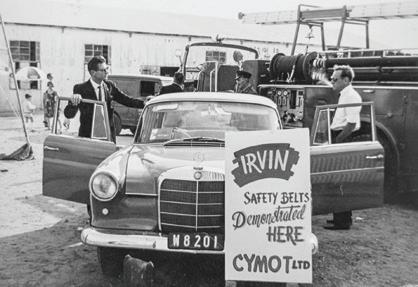
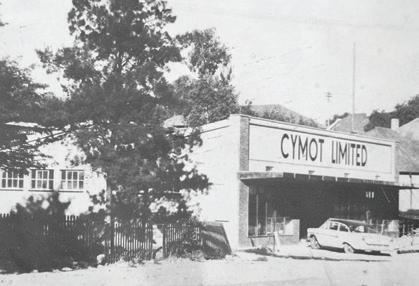
1950
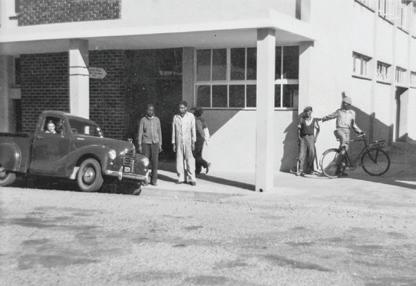
CYMOT branc h
Ir vin Safety Belts were impor ted and distributed by CYMOT in an era where safety belts were not a standard f eature in vehicles.


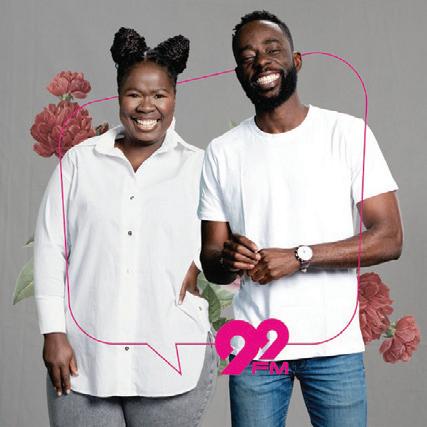

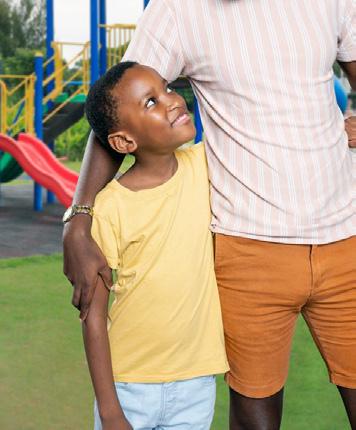

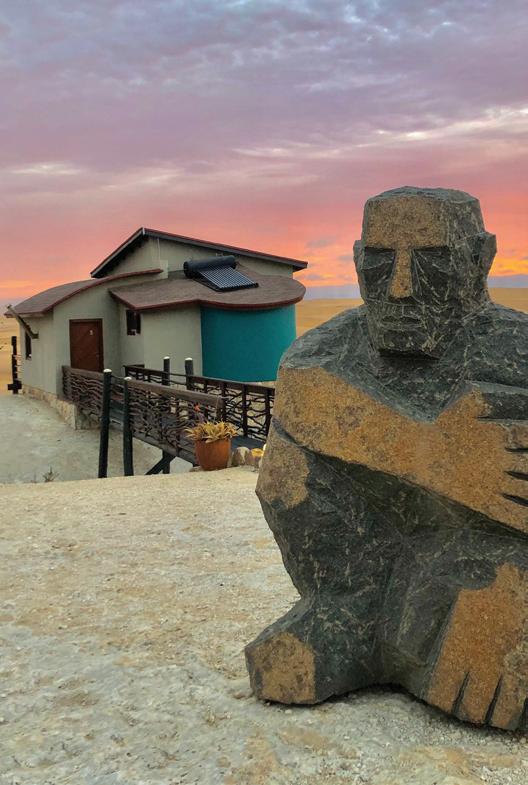



Hygge and wabi-sabi. These two foreign lifestyle and design philosophies come to mind at Desert Breeze Lodge. Perched on granite boulders bordering the Swakop River, overlooking dunes of the Namib Sand Sea’s proverbial beach-break with cosy comfort and quirky style, this lodge is completely unique to Swakopmund’s accommodation offerings, and arguably one of the most interesting in the country.
Hygge is a defining characteristic of Danish culture. Pronounced something like hoo-gah, hygge is the quality of comfortable conviviality, generating feelings of contentment and well-being from an all-encompassing cosiness. Seated by a wood-burning fireplace, lounging on a plush sofa with a dog-eared book while a blanket of coastal mist hangs over the landscape outside, few words manage to pinpoint the ambience quite like hygge does. Surrounded by natural timber details, curled up in bed with a picture frame view of the endless sand sea outside, hygge could very well be just as defining of Desert Breeze as it is of the Danish.
Similarly, a warm fuzziness rushes through your veins when spending a moment paging through the Desert Breeze guestbook. Pages and pages filled with comments and pen colours from all over the world, all praising the brilliant breakfasts, unique design, breathtaking views and unparalleled comfort of the lodge. A guestbook truly gives the best insight into accommodation establishments, and Desert Breeze’s repurposed photographic coffee table version speaks volumes of the hygge experience had by many on the bank of the Swakop River.
Whether staying in one of the twelve en-suite chalets, or sharing the self-catering villa with family and friends, or opting for a garden view from the Jungle Bungalow – comfort, cosiness and contentment are guaranteed. Desert Breeze not only meets every need from coffee, tea and mini-fridge facilities to wireless internet access, but due to its location on the outskirts of Swakopmund also offers welcome respite
from the town’s bustling centre. The lodge’s architecture captures you as you enter the property. Bursts of cobalt blue, burnt orange and lime green draw the eye into the smaller details. Rounded walls, angled roofs, organic wood beams and trusses all poetically juxtaposed by the pale granite they sit on. This is wabi-sabi, the Japanese philosophy that beauty lies in the imperfections of nature. As a design aesthetic, wabi-sabi has been translated into the simplistic and understated mixing and matching of influences.
Desert Breeze showcases precisely how seemingly unrelated items can come together, evoking a sense of adventure and grandeur in the most tasteful manner. Like visiting the home of a well-travelled friend, where shelves are filled with knick-knacks from the other side of the globe and details are divinely influenced by exotic ventures. The design, decor and subsequent atmosphere of Desert Breeze generate similar wanderlust – only, you are already exactly where you ought to be.
The reception, lounge, dining area and viewing deck in the main area are lessons in wabi-sabi. Jute rugs and wall hangings, deep leather couches around a mokoro canoe repurposed as a coffee table, high ceilings with skylights, and yet another wood-burning fireplace. A larger-than-life granite boulder abstractly represents a rhino and commands the way to a delightful lunch or dinner in the open plan dining area. In the succulent garden, so synonymous with Swakopmund, or strolling through the basalt rock sculpture exhibits scattered all over the property, the longer you linger and marvel, the more details are revealed.
Perhaps the only part of Desert Breeze that cannot be translated or interpreted into new-age philosophy, is the view. First the steep bank of the Swakop River and then the apricot coloured dunes, like waves at low tide. Sossusvlei’s dunes might be bigger and redder, yet from the high vantage point of the deck of your Desert Breeze chalet, the masses of crescent hills of sand stretching as far as the eye can see are an experience completely in its own right.
Tel: +264 (0) 64 406 236
Email: info@desertbreezeswakopmund.com

Website: www.desertbreezeswakopmund.com

Strategically


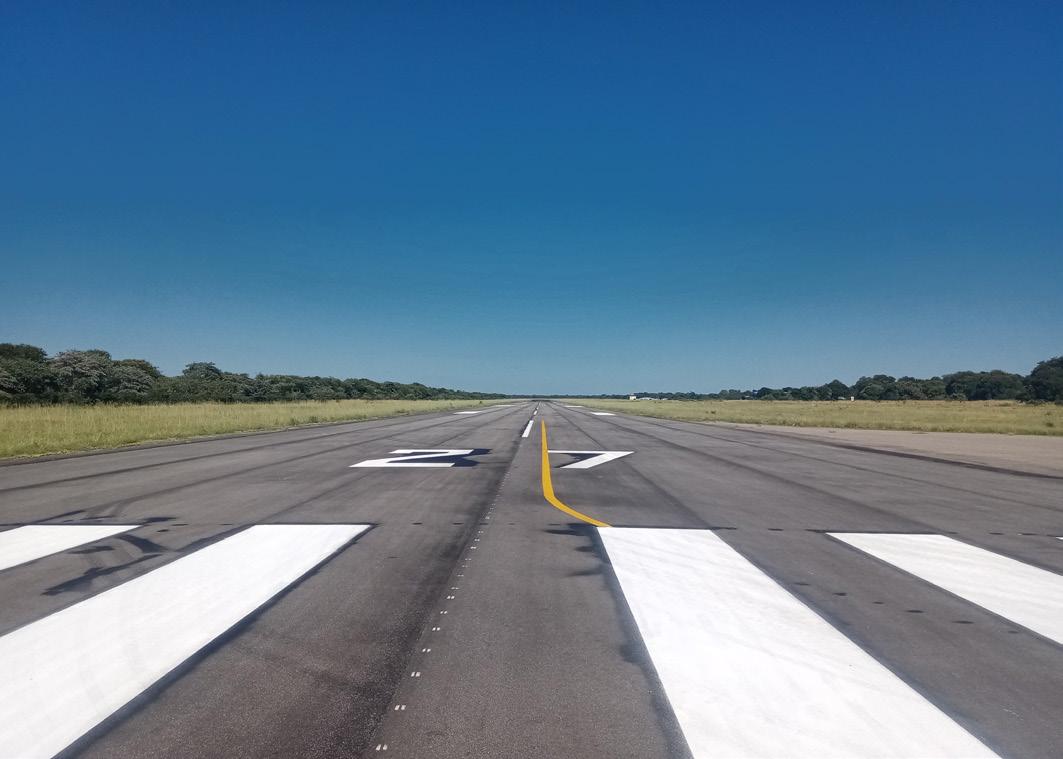

In a world where barriers often hinder the potential of children with disabilities, a ray of hope shines brightly in Namibia. Debmarine Namibia, a renowned diamond recovery company, has taken a momentous step towards transforming the lives of exceptional children by making a generous and heartfelt donation. Valued at an astounding N$300,000, the donation comprises essential science equipment that will fortify the educational journey of students at Eluwa Special School in Ongwediva. This act of compassion aims to nurture the school's unwavering dedication to providing quality education and empowering students with hearing, visual, and intellectual impairments.
The deputy director of education in the Oshana Region, Hilma Nuuyango-George, expressed sincere gratitude for the invaluable donation, emphasising the urgent need for specialised equipment and instructional materials at the school. Recognising the financial constraints faced by the directorate, she acknowledged the limitations in meeting all the necessary requirements without external support.
During the official handover ceremony of the donation, Nuuyango-George praised Debmarine Namibia for their unwavering dedication to inclusive education and the empowerment of students with disabilities. The contribution from the Debmarine will undoubtedly have a profound impact on the learning experience of the students at Eluwa Special School.
Eluwa Special School consists of three dedicated sections catering to students with hearing impairment, visual impairment, and intellectual impairment. Currently, the school accommodates a total of 381 learners, providing them with specialised education within a nurturing environment.
Elizabeth Nuugonya, the principal of the visual impairment section at Eluwa Special School, highlighted the remarkable progress made in the lives of the learners, even with the limited resources available. She emphasised the crucial role that donations play in easing the teaching and learning process, stating, "Without such donations, we could not have achieved what we have achieved so far."
Originally established in 1966 by the Finnish Mission in the Engela village of the Ohangwena Region, the school initially catered exclusively to visually impaired learners. However, in April 1973, the Department of Education took over and
relocated the school to Ongwediva, introducing the hearing impairment section to serve a broader range of students with disabilities.
The sponsorship provided by Debmarine Namibia aligns with the company's social investment pillar, "Partnering for Thriving Communities." This initiative reflects their commitment to partnering with communities and generating long-lasting benefits in crucial areas such as health and wellbeing, skills and education, and livelihoods.

As part of their broader social responsibility commitment, Debmarine Namibia has established a social investment fund that addresses the identified needs of communities throughout the country. Their aim is to provide sustainable solutions that promote the long-term socio-economic development of the communities in which they operate.
By assisting Eluwa Special School, Debmarine Namibia is actively contributing to improving the lives of children with visual, hearing, and intellectual impairments. They firmly believe that education is a key driver of socio-economic development and remain dedicated to supporting initiatives that ensure access to education for all.
The sponsored equipment includes a range of essential resources such as paints, computers, televisions, fencing materials, Perkins Brailler, teaching aids, science equipment, printers, and stationery, all amounting to a total value of N$300,000. Debmarine Namibia trusts that these materials will be put to good use and significantly contribute to the well-being and development of the special learners at Eluwa Special School.
Debmarine Namibia's support for Eluwa Special School exemplifies their dedication to partnering with communities to create a brighter future for all. Their commitment to using resources for sustainable development and leaving a lasting positive legacy in the communities they operate in is truly commendable. The company hopes that this sponsorship serves as an inspiration for others to support their communities and make a positive difference in the lives of those less fortunate.
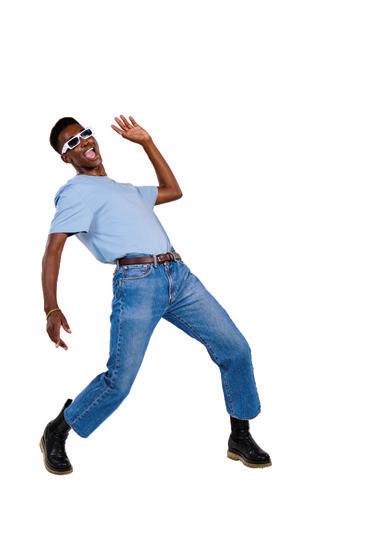




Oceans regulate our climate, absorb carbon dioxide and produce 50% of the oxygen we breathe. Therefore, understanding their significance to us and vice versa is of utmost importance. They provide food, jobs and livelihoods and the potential for economic development for coastal communities. Namibia’s marine and coastal tourism is an essential component of the country’s recreational opportunities along the Atlantic Ocean in towns such as Walvis Bay, Swakopmund, Henties Bay, Lüderitz and Oranjemund. The Lüderitz Blue School, newly established in the eponymous coastal town in the //Karas Region in southern Namibia, educates children and young people about the importance of protecting our oceans, balancing and restoring ecosystems, boosting biodiversity and ensuring sustainable fishing practices that restore the health of our oceans and protect them for future generations. It is designed to provide an educational experience that encourages creativity, critical thinking and problem solving.
The school follows the internationally recognised UK National Curriculum with adjustments to suit the Namibian context. It places a strong emphasis on critical thinking, encouraging children to develop independence and problem-solving skills from a young age as well as thinking creatively. “The school has been set up to offer a high proportion of scholarship places for children who have the ability and interest to thrive in an environment like the Blue School, but who would not otherwise be able to afford the school fees. A scholarship
covers the full cost of school fees for as long as the child remains at the school”, says Chair of the Board, Lucy Hooft. “Our doors are always open and we love to hear from prospective parents or interested members of the community who have a skill to share.
The 2022 United Nations Climate Change Conference (COP27), themed Together for Implementation, marked a turning point where most stakeholders and partners now seem to recognise the notion of ocean literacy as pivotal in tackling climate change. The largest global annual event on climate change, held in November last year in the Egyptian coastal city of Sharm El-Sheikh, concluded with increased awareness of the need to strengthen ocean science and seek ocean-based solutions to reverse climate change. The 2023 UN Climate Change Conference will take place from 30 November to 12 December 2023 in Dubai, United Arab Emirates (UAE), with the focus on the importance of the oceans and oceanic life.
Maggie Forcelledo PazA





Ashort drive from Windhoek takes me into the beautiful bushland of the Khomas Highlands for an excursion to one of Namibia’s newest tourism gems. I find Gmundner Lodge, set on a 6,000 hectare farm, 35 minutes east of the country’s capital. As I enter through the gates, a baboon sits sentinel atop a Shepherd’s tree, keeping a watchful eye across his realm. The landscape is scattered with acacia bushland, undulating hills, and grazing wildlife. Red hartebeest, warthog, and steenbok flit in and out of bush and grass as I follow the gravel road further into the property. I round a few bends and the lodge, perched along the edge of a hillside, comes into few.

Double doors swing open into a magnificent foyer as I am greeted by lodge staff and manager Pierre Germishuizen. The centrepiece of the space is certainly the 360 degree leather-clad bar counter right in the middle of the main area. Beyond it lay a view beyond words. Awe-inspiring. The lodge is a perfect blend of opulence and old-world charm, offering classic colonial luxury in the heart of the Namibian wilderness. Large villas spread out to the left and right of the main area, like wings along the hillside. There is nothing understated or reserved about them. The perfect showcase probably being the clawfoot tub on your private deck. Each grand unit is named after an even grander global metropolis. Of those that inspire travellers and explorers to wonder and wander. Tokyo, New York, Rome, and Prague. However, the city lights of Tokyo and New York have nothing on the Namibian night sky, and the ancient buildings of Rome and Prague could never compare to the vast and stunning landscapes that spread beyond the valley below.
I discover during my visit that Gmundner Lodge values selfsustainability and going back to nature above all else. The owners hail from Austria, where they run Gmundner Keramik, established in the 15th century. On-site, guests can visit a ceramic workshop, where they can create their own Africainspired ceramic cups, bowls, plates and more to take home. Further afield, a community of San artisans at Donkerbos create beautiful hand-painted ceramic plates as part of Gmundner’s community upliftment projects. These are set to soon be shipped off for display at a museum in Austria. The proceeds of the ceramic sales being ploughed back into their community.
The lodge employs over 50 workers and the operations are designed to be as self-sustaining as possible, with the kitchen
being supplied by the on-site gardens and livestock. “All fresh produce used at Gmundner is produced on the farm,” shares Pierre as he shows me around the lodge and operational farm setup. The menu, which changes daily, is determined by what is in season. The chef is unfortunately not at the lodge for me to meet as he is currently training at a twoMichelin-star restaurant in Austria. The lodge's philosophy is to be self-supported, with a value chain from farm to table that is natural and organic.
Walking through the lodge spaces, so very well thought-out, I realise that Gmundner was created for those seeking to retreat back to nature and enjoy the journey in style. Families feel as welcome here as honeymooners and well-travelled adventurers.
In the plans for the near future are a farm deli, bakery, beer, and gin distillery, where guests can enjoy authentic Namibian craft and culinary experiences. The vegetable garden is thriving, fed by an aquaponics system, which uses natural processes to create a symbiotic environment. I hold the most perfect plump purple aubergine in my hand and can visualise the chef incorporating it into a guest’s dinner in the near future. Soil to gourmet fair indeed. This is a perfect example of how the lodge's values of sustainability and natural organic practices are incorporated into every aspect of the business.
Gmundner Lodge makes no attempt to set itself up as an exclusively wildlife or nature reserve-focused landscape. Instead, it is a working Namibian farm where guests can experience the best of both worlds - luxury and authenticity. Here livestock and wildlife coexist in a sustainable and pragmatic example of effective land-use practices. The lodge is a perfect example of how foreign investment can be used to create a sustainable and mutually beneficial business that benefits the country.
Gmundner is a truly unique and authentic experience that showcases the best of Namibia. From its stunning natural surroundings and wildlife to its luxurious amenities and commitment to nature, the lodge is a perfect example of how tourism can be used to benefit both the environment and the local community. The Gmundner logo greets me on my departure. Reminiscent of an infinity sign with a bit of extra flair, it is a beautiful symbol of the interconnectedness of nature, man, and wildlife.
 Elzanne McCulloch
Elzanne McCulloch


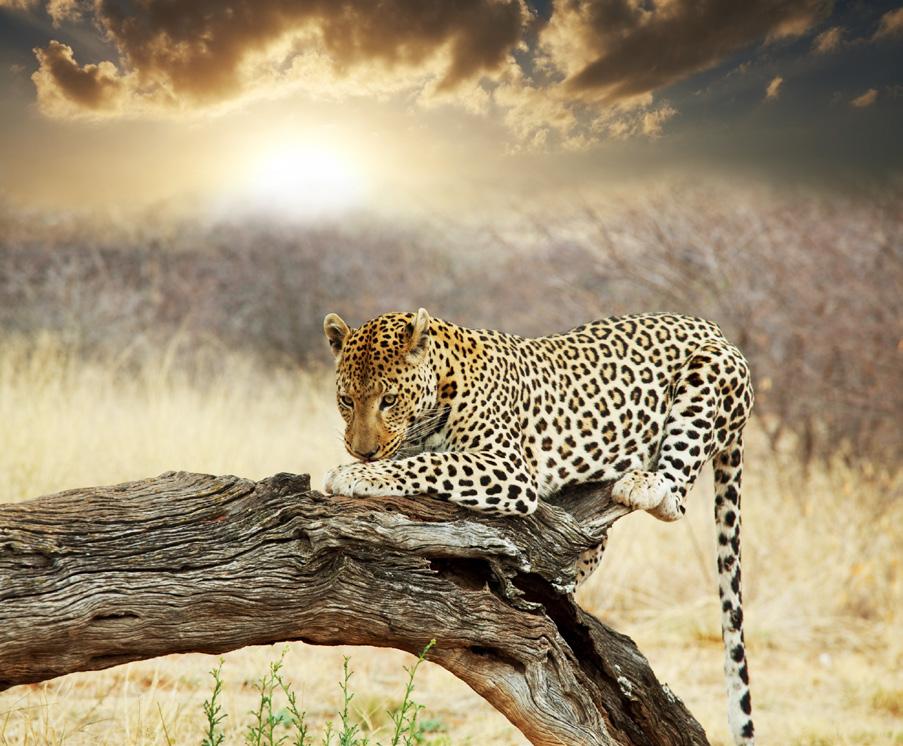





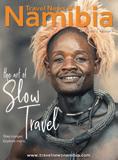


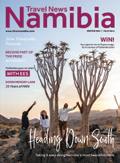
This month in history:
2 June 1953
Coronation of Queen Elizabeth II of the United Kingdom in Westminster Abbey. Celebrating 70 years in 2022, she was the longest-reigning monarch in British History.
5 June 1981
The US Center for Disease Control and Prevention reported the first cases of the disease later known as AIDS.

17 June 1885
The Statue of Liberty arrives in New York City. The 46 meters high, 225-ton statue was a gift from France to commemorate their friendship with the United States.

25 June 1984
Prince released his album "Purple Rain" which spent 24 consecutive weeks at number one on the Billboard 200.

26

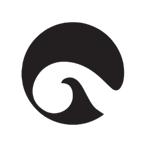
June 1906
11 June 1770

Captain James Cook, commander of the British ship Endeavor discovered the Great Barrier Reef by running onto it. After extensive repairs to the ship, it took the crew three months to navigate the mazelike construction of the reef.
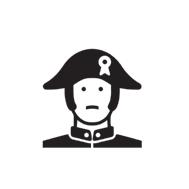
18 June 1815
Napoleon Bonaparte was defeated at the Battle of Waterloo, after which he was exiled to St Helena.
29 June 1815
The birthstone of June is moonstone and pearl.


World Oceans Day 8 June Father’s Day 18 June LGBTQ+ Pride Month June

June World Environment Day EASY HARD EASY HARD 1 9 7 8 9 5 8 5 2 1 8 4 3 5 5 3 9 8 7 2 1 4 6 2 2 9 8 1 6 3 4 2 6 3 8 8 6 1 9 8 9 6 7 8 2 3 5 6 7 1 2 5 4 2 7 7 3 5 6 4 7 1 8 2 9 1 2 7 8 6 9 5 4 3 4 9 8 5 2 3 7 1 6 8 4 1 2 3 7 6 9 5 2 7 5 6 9 4 3 8 1 9 6 3 1 8 5 4 7 2 5 1 9 7 4 6 2 3 8 7 3 2 9 5 8 1 6 4 6 8 4 3 1 2 9 5 7 9 6 8 3 4 1 5 2 7 4 2 1 5 9 7 6 3 8 7 3 5 8 2 6 1 4 9 8 5 9 2 3 4 7 1 6 3 1 6 7 5 8 2 9 4 2 7 4 6 1 9 3 8 5 6 9 7 1 8 2 4 5 3 5 4 2 9 6 3 8 7 1 1 8 3 4 7 5 9 6 2


Once upon a Alte Kalköfen Lodge | Step back in time at the Alte Kalköfen Lodge, home to the second oldest lime kiln in Namibia, built in 1906 by George Köttker - a German Schutztruppe. Operating until the 1970s, the lime produced was used to build historic structures in towns like Kolmanskop, Lüderitz, and Keetmanshoop, showcasing the ovens' lasting impact on the South's architecture.
